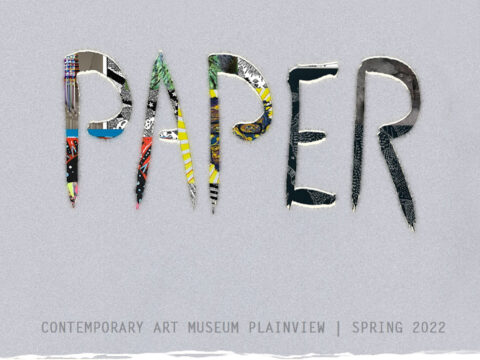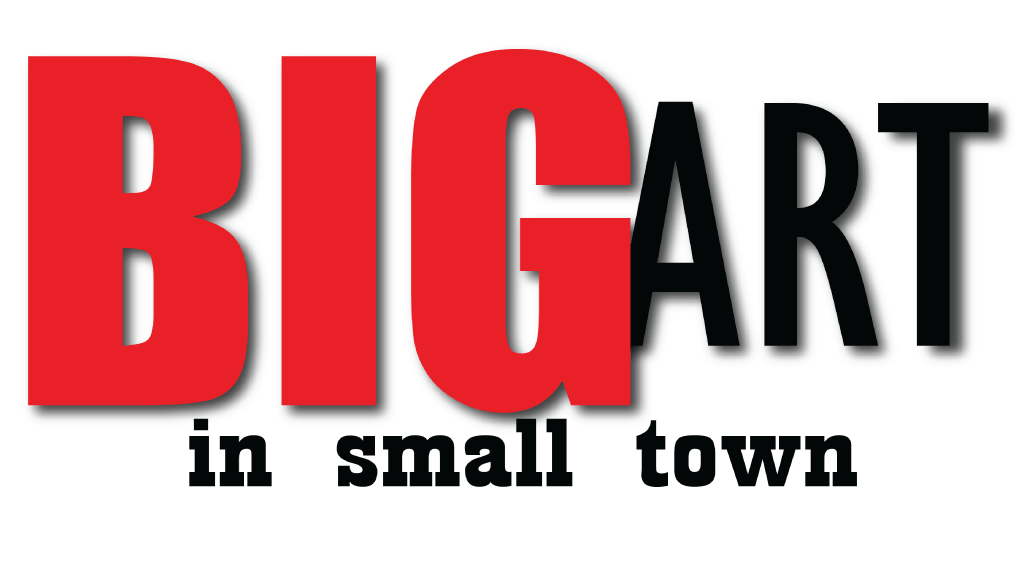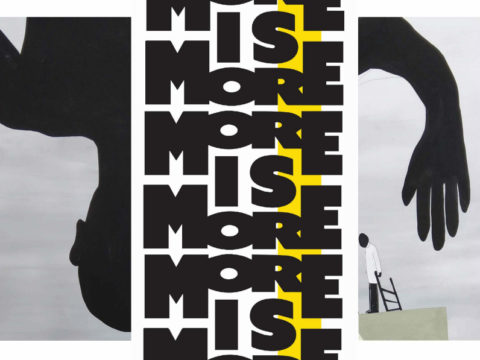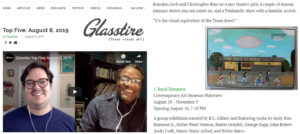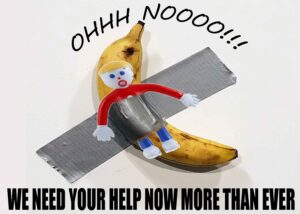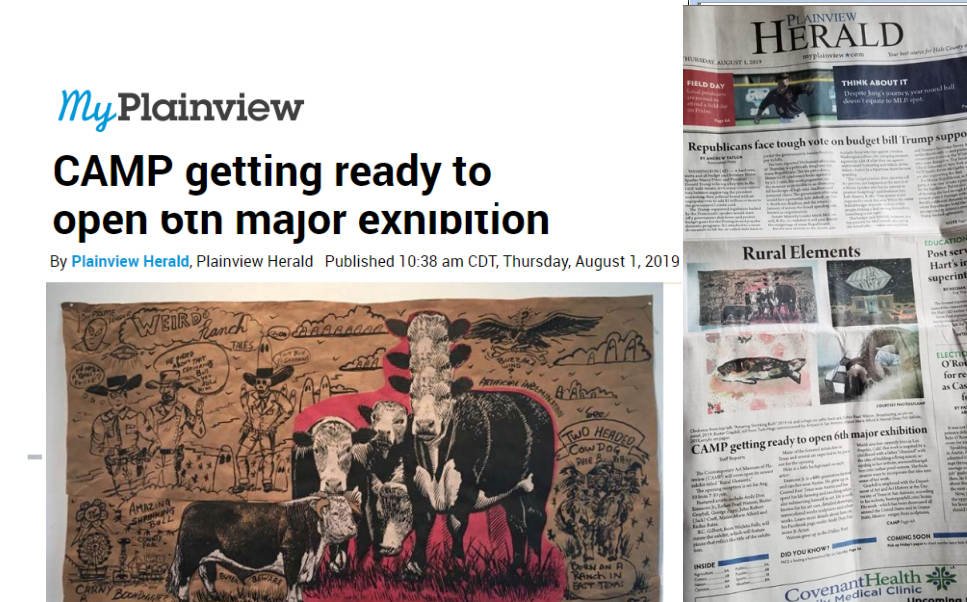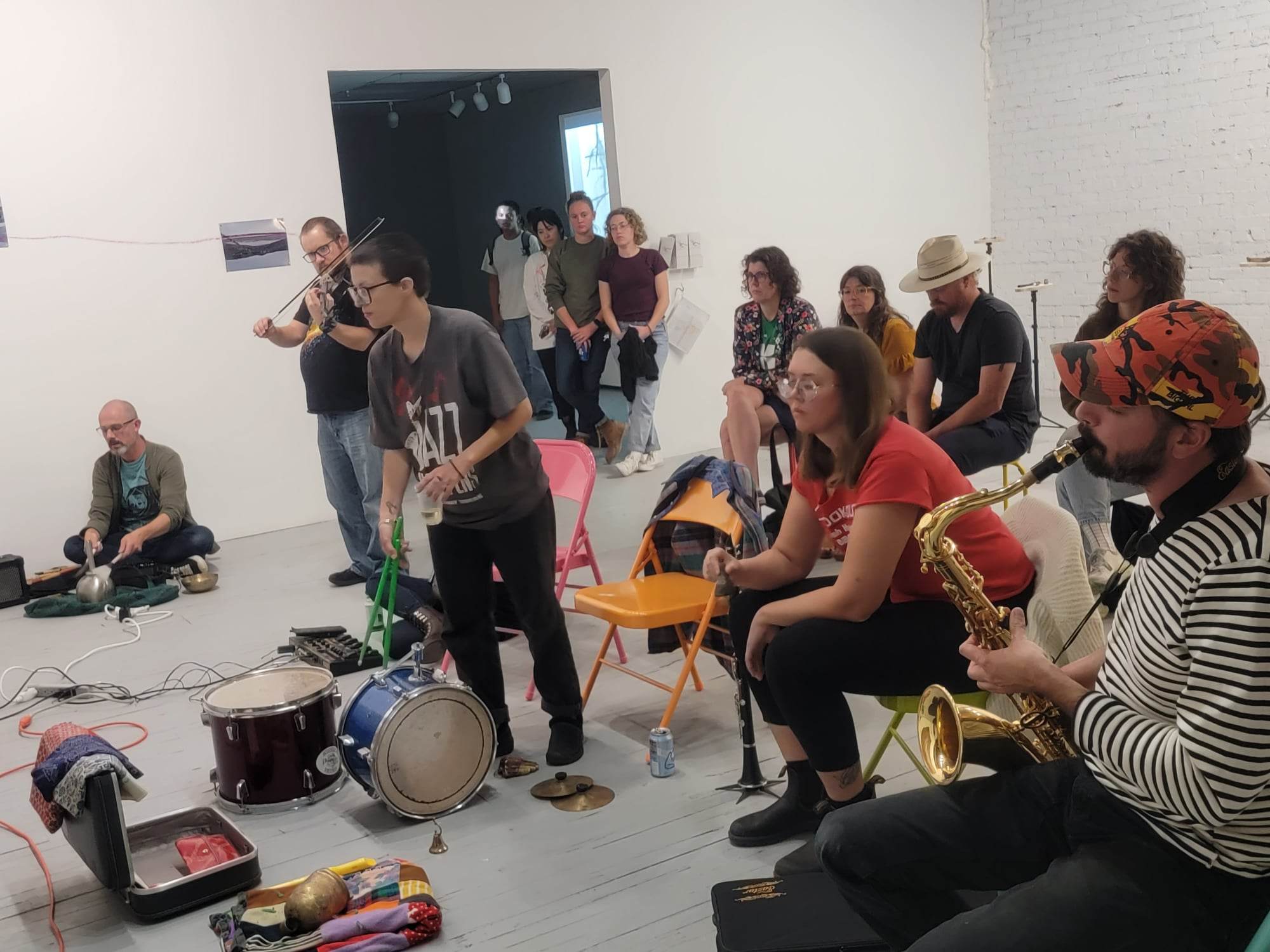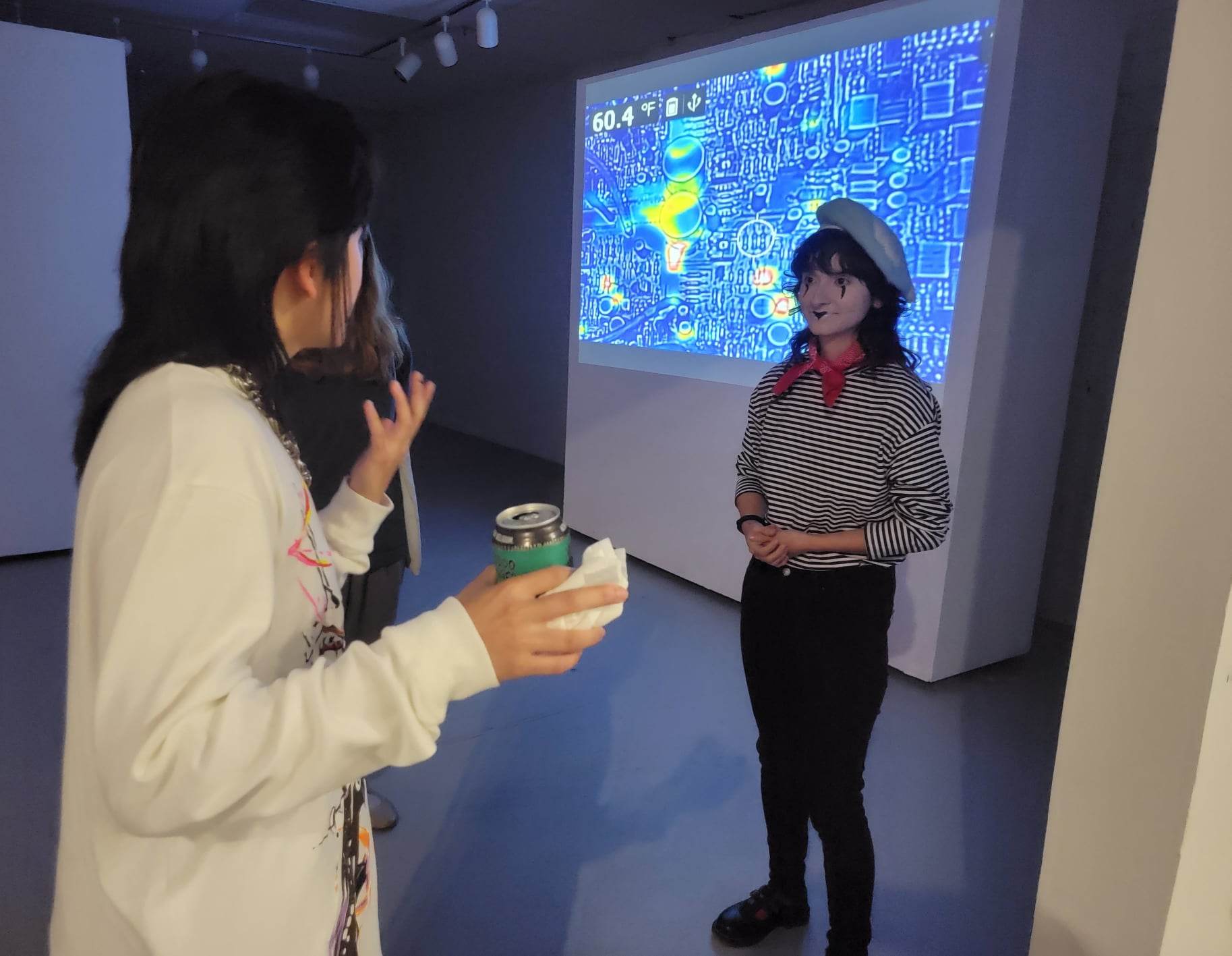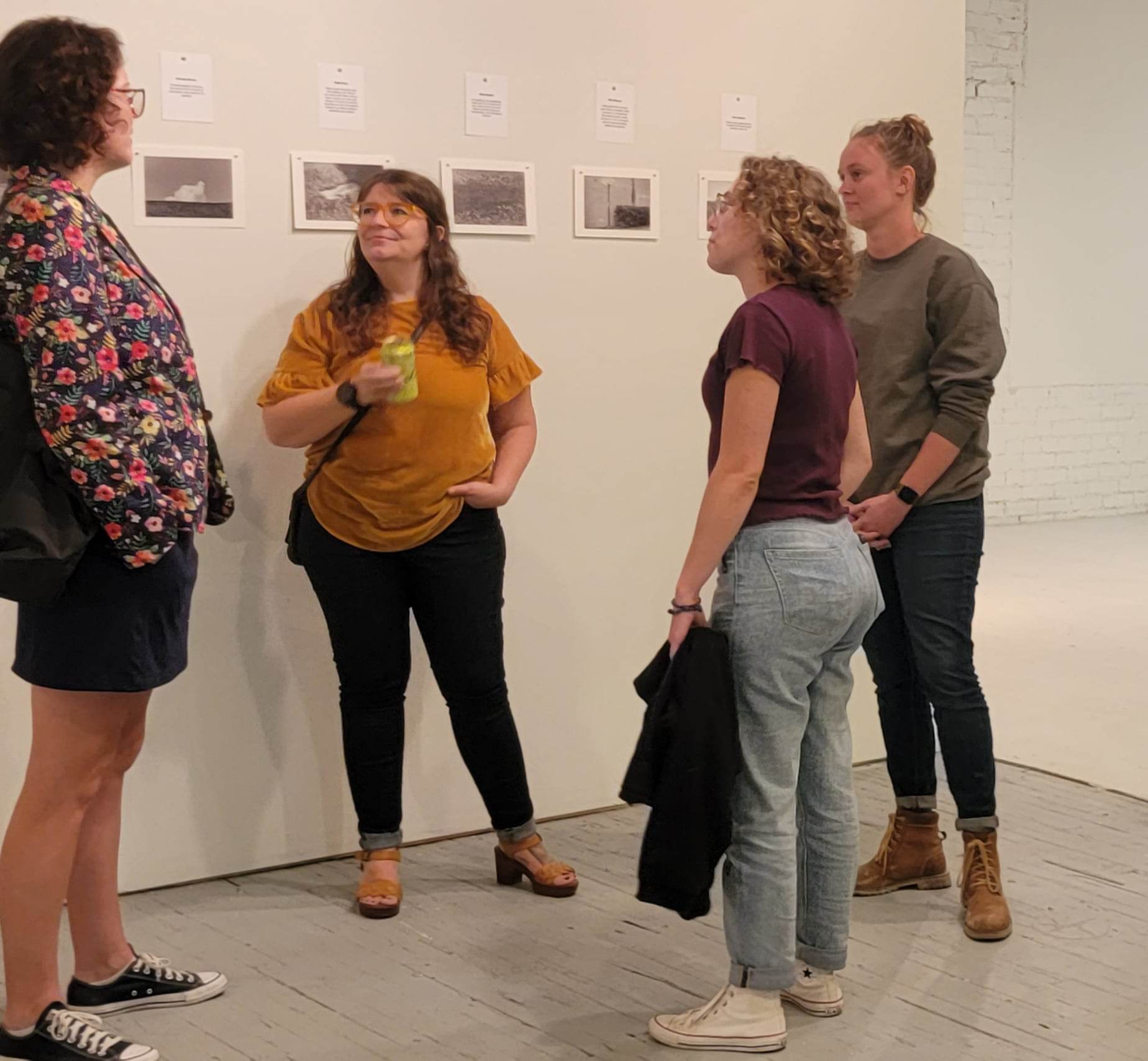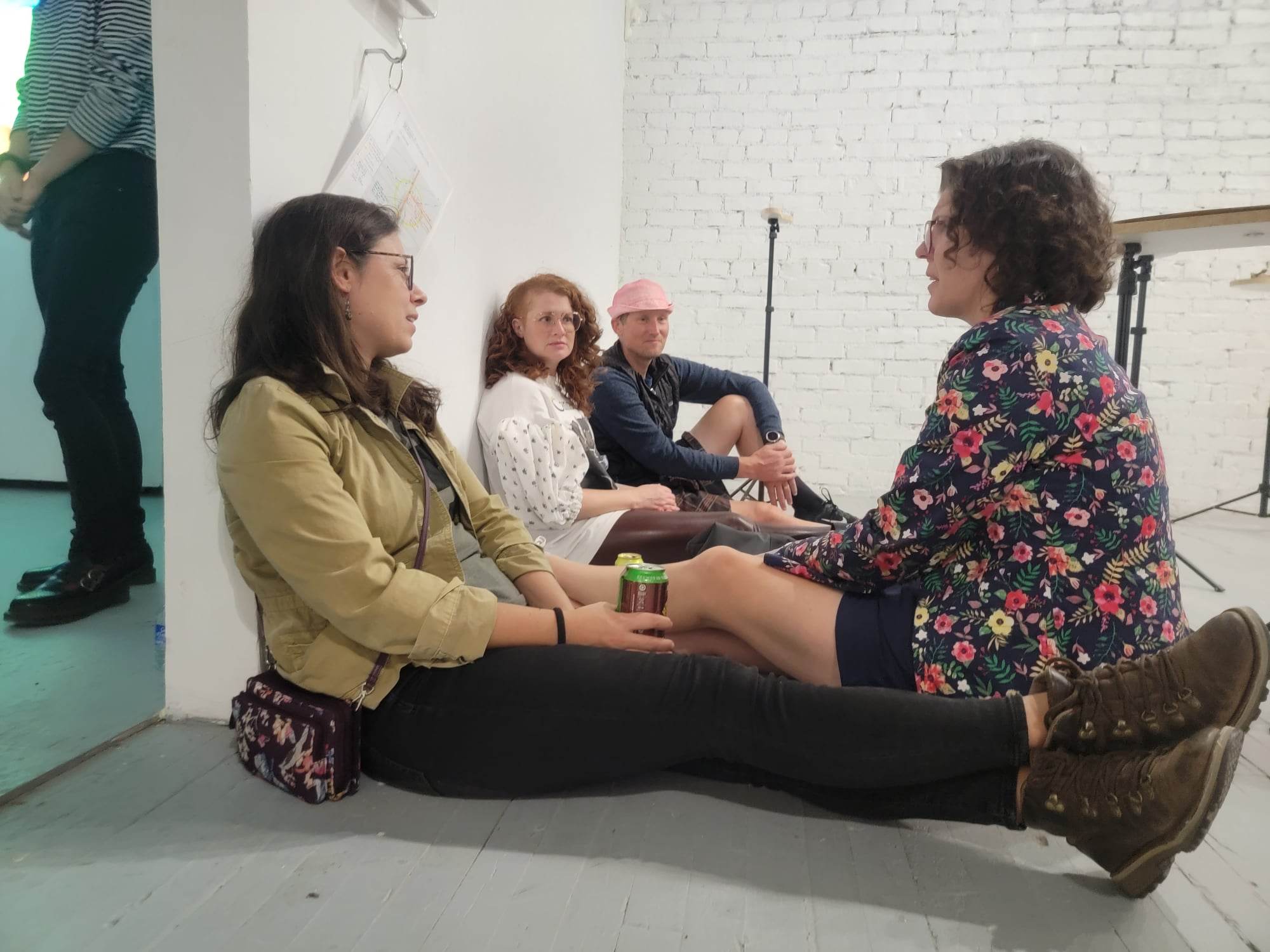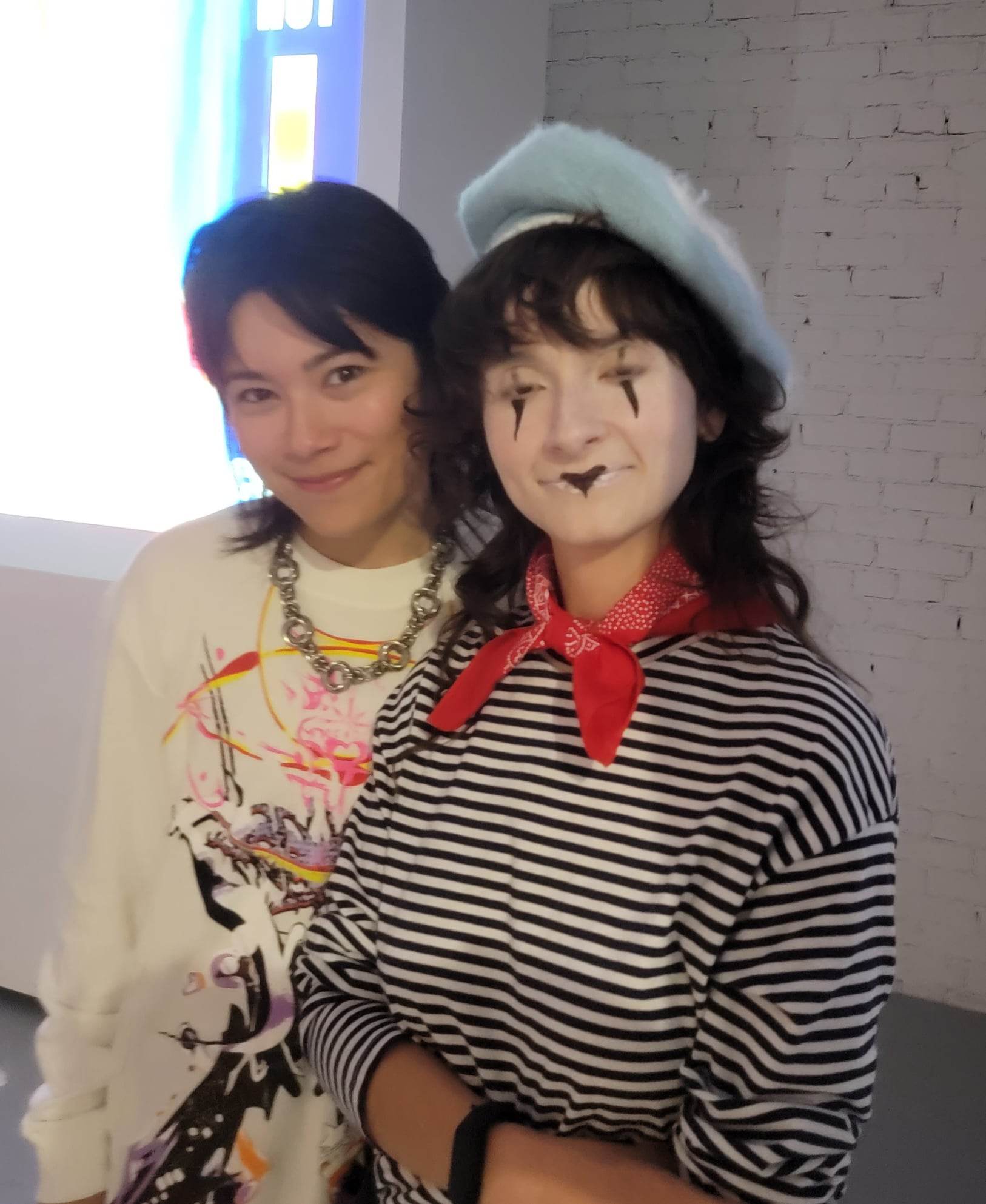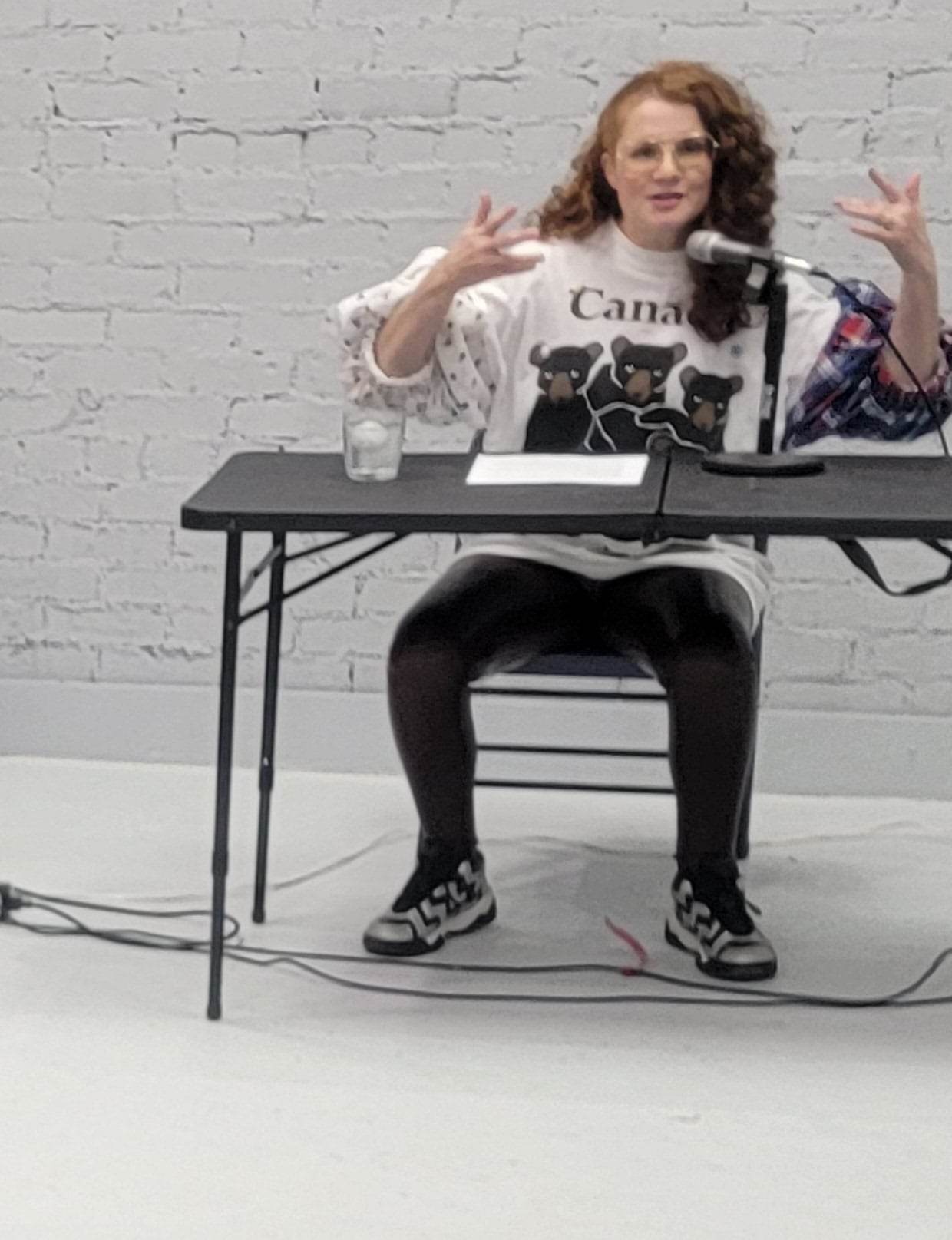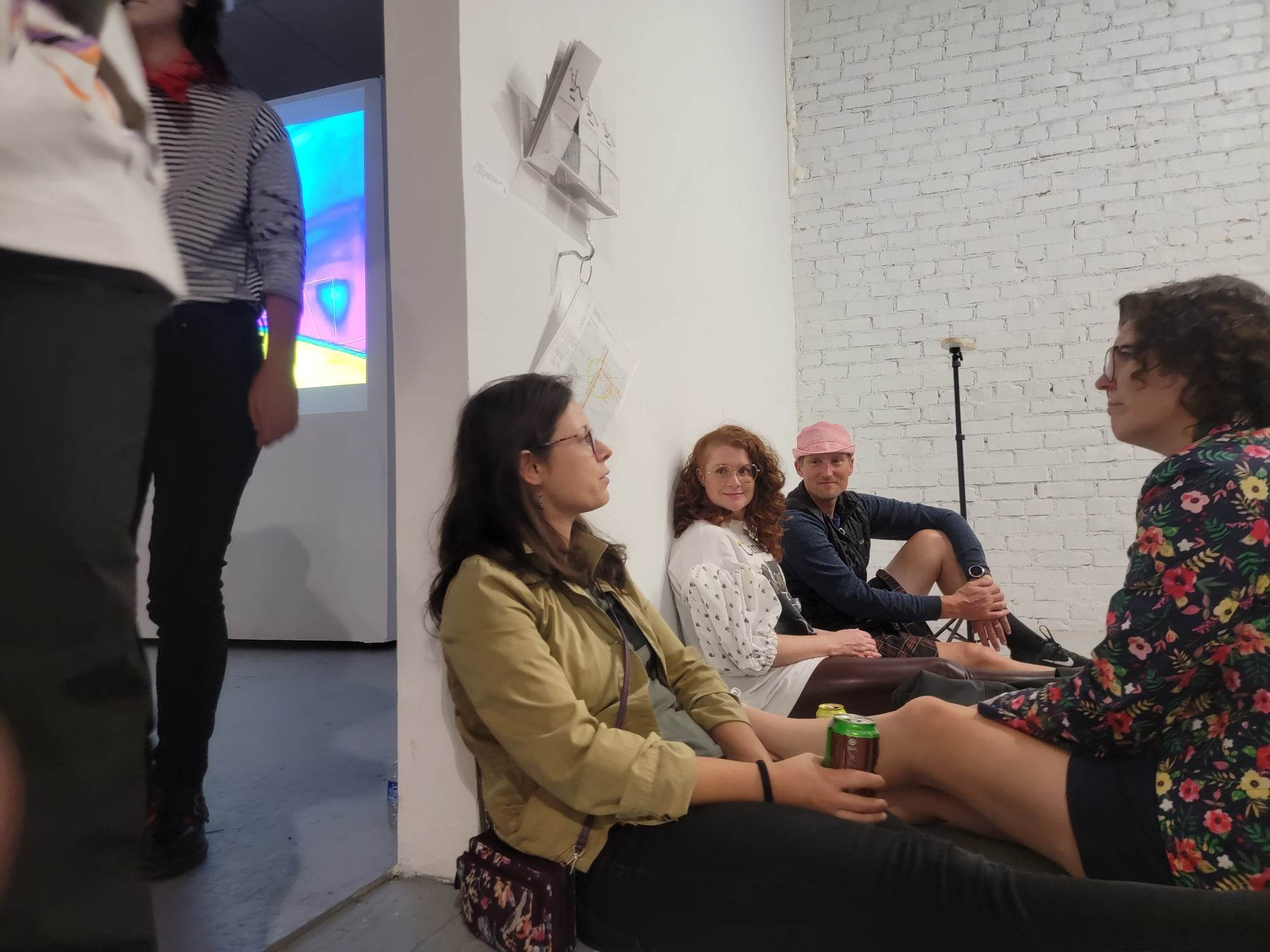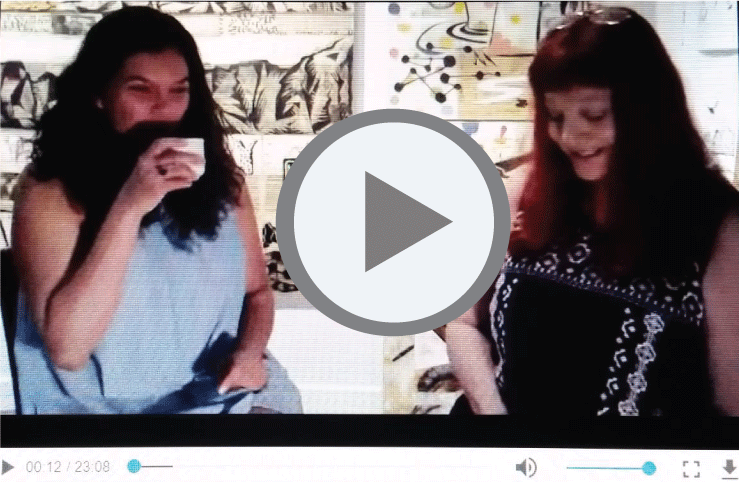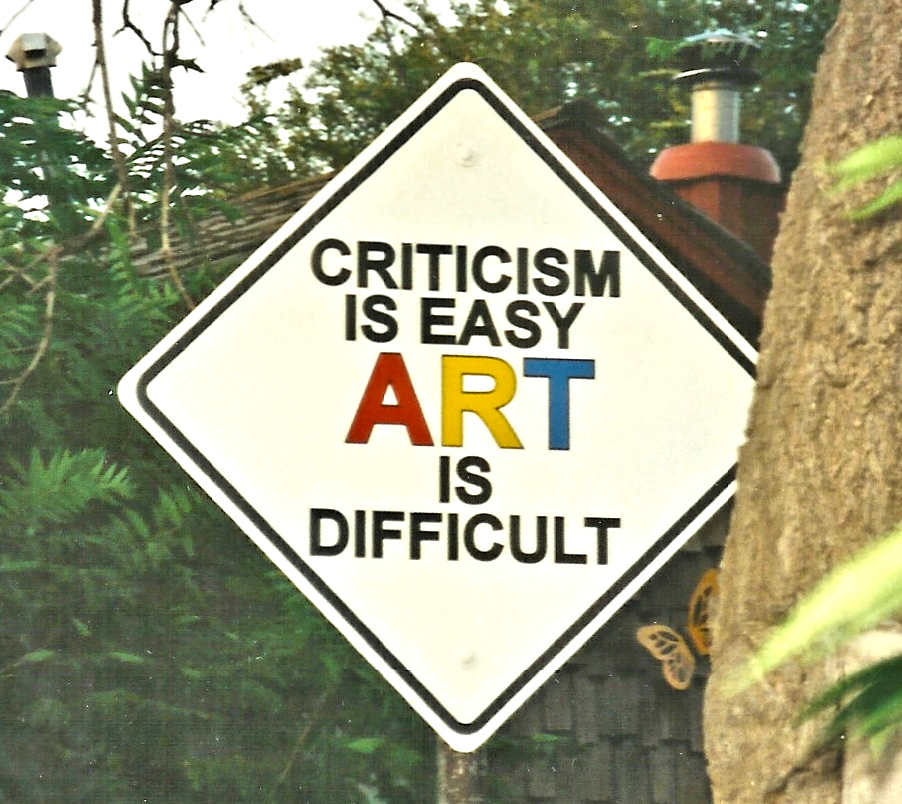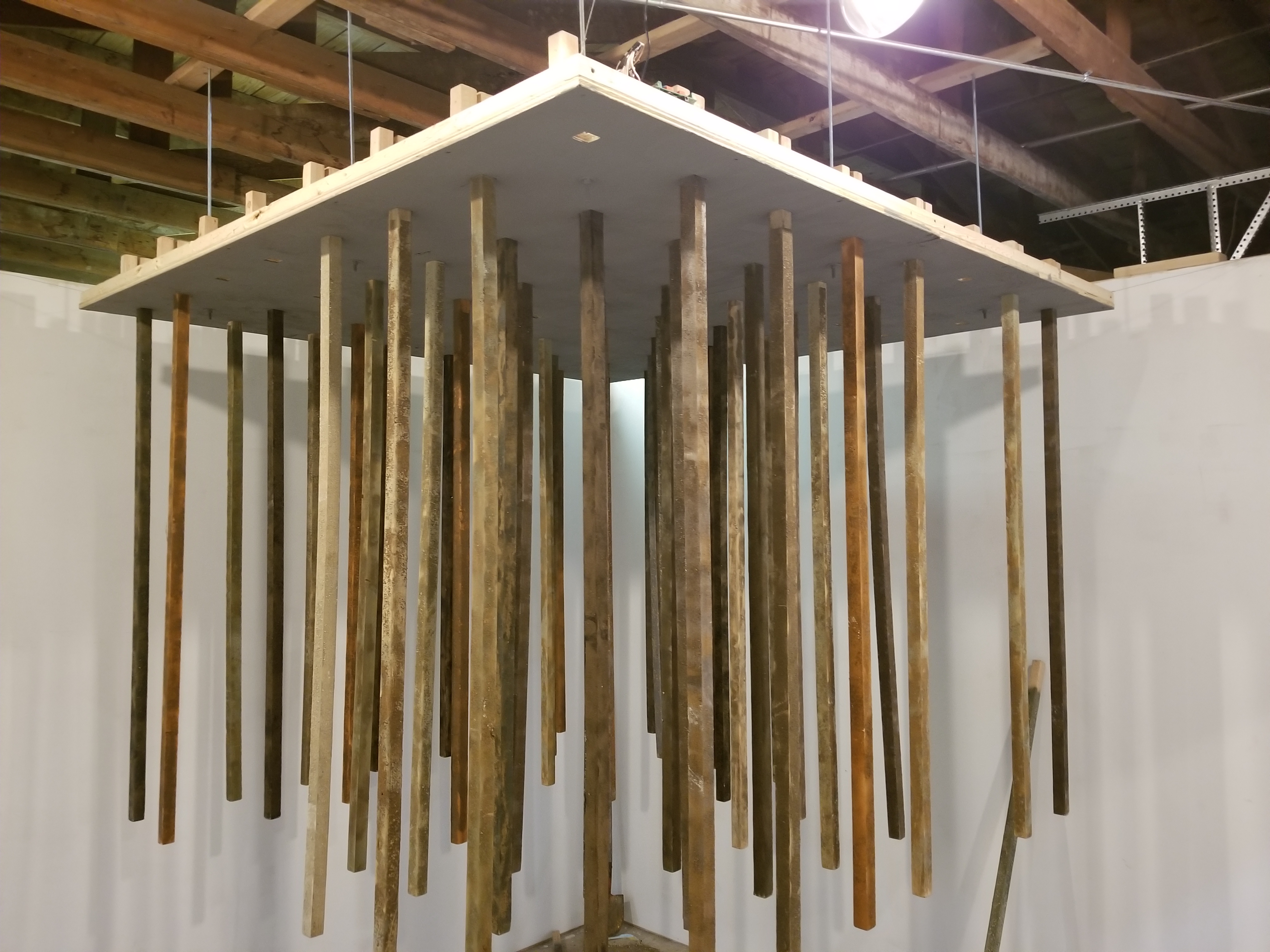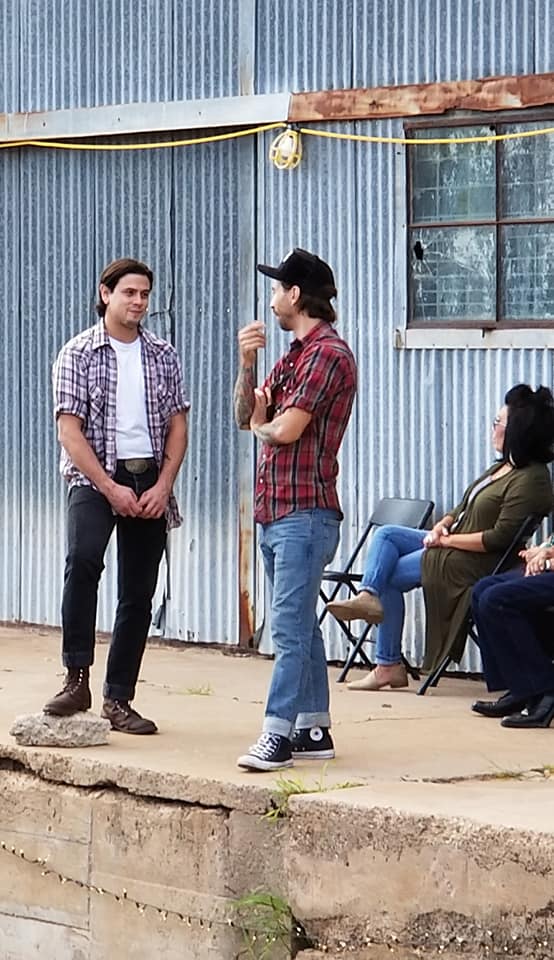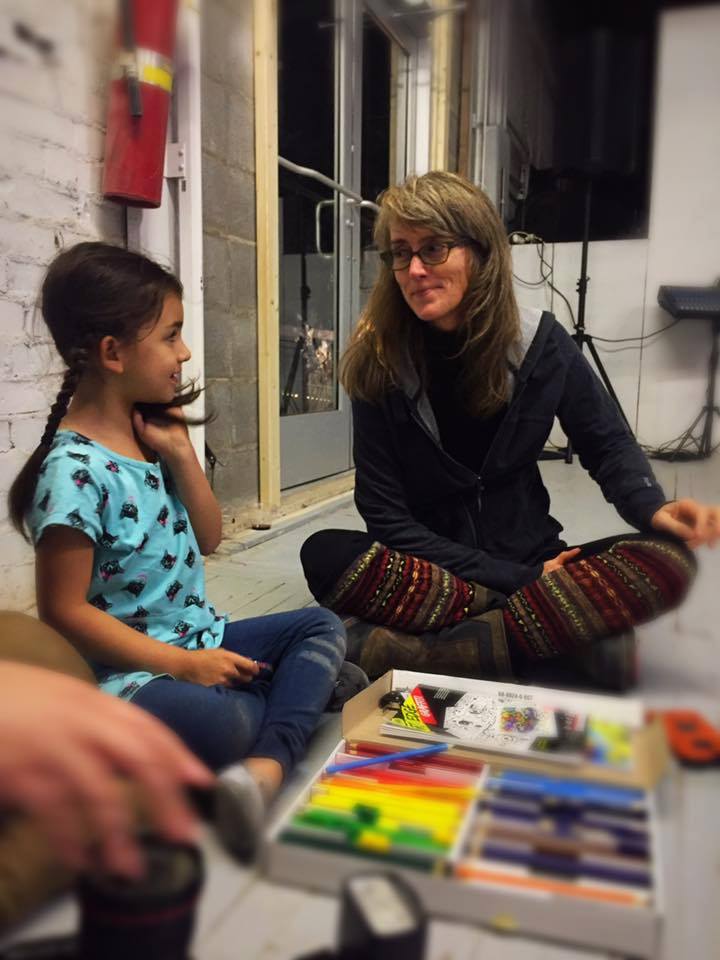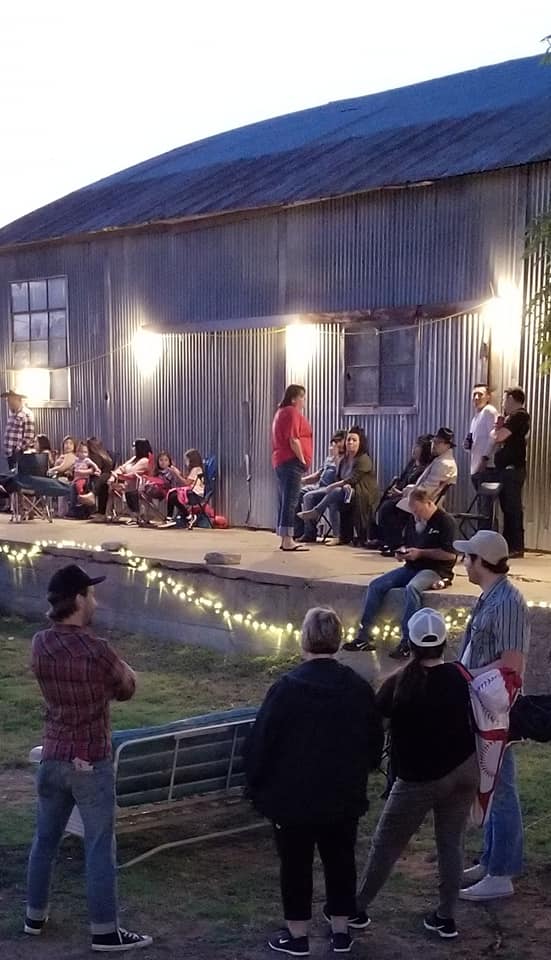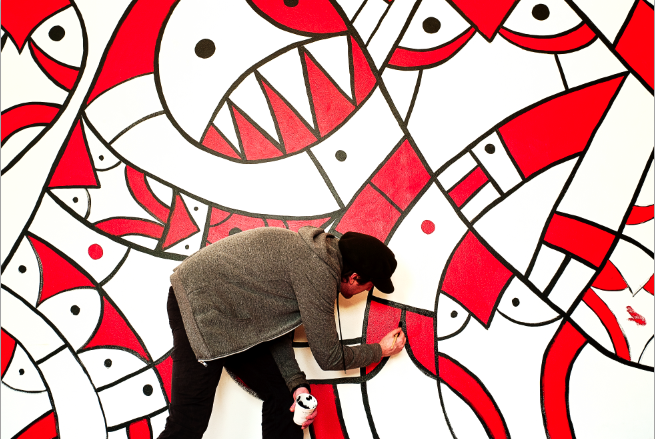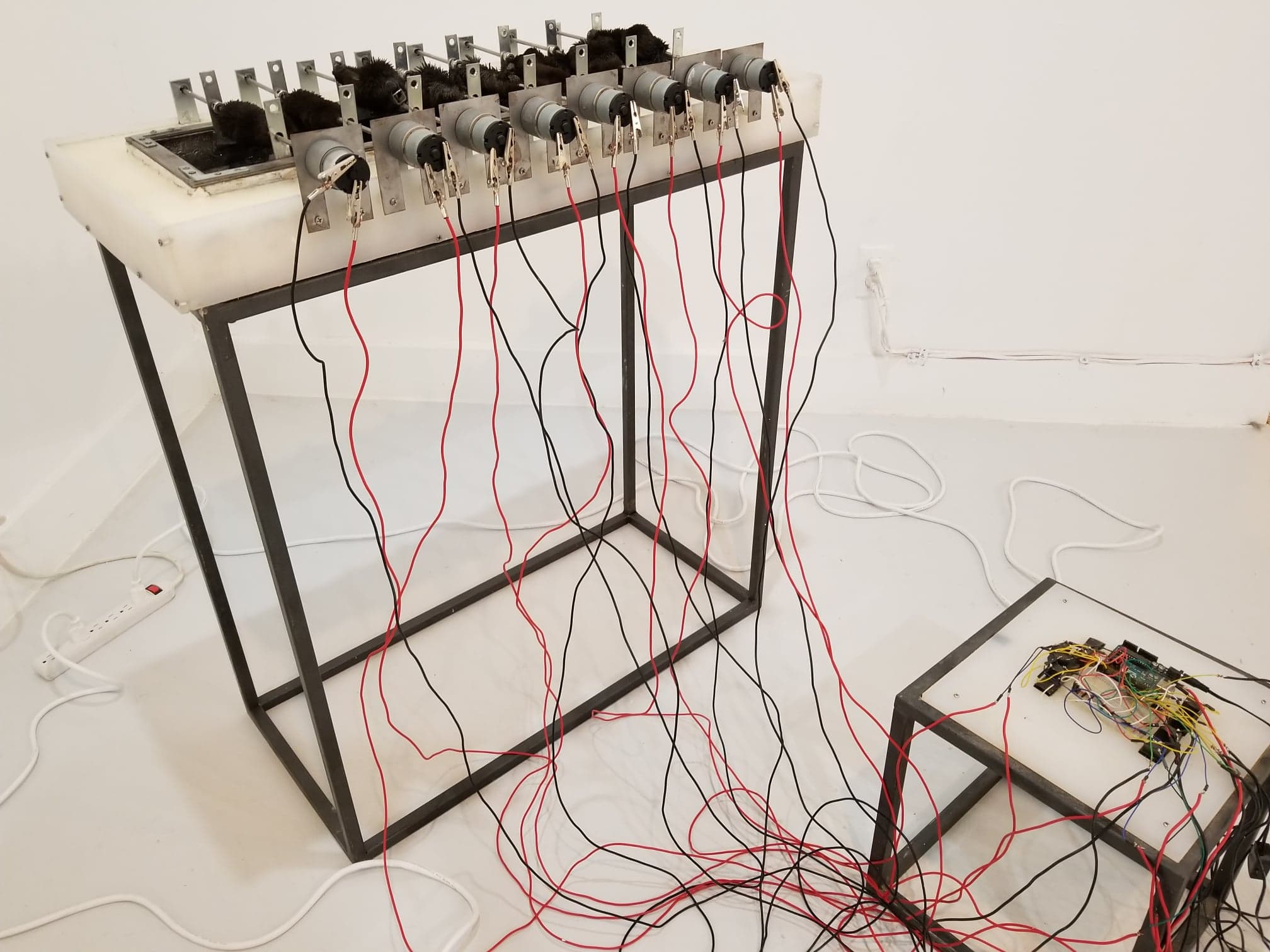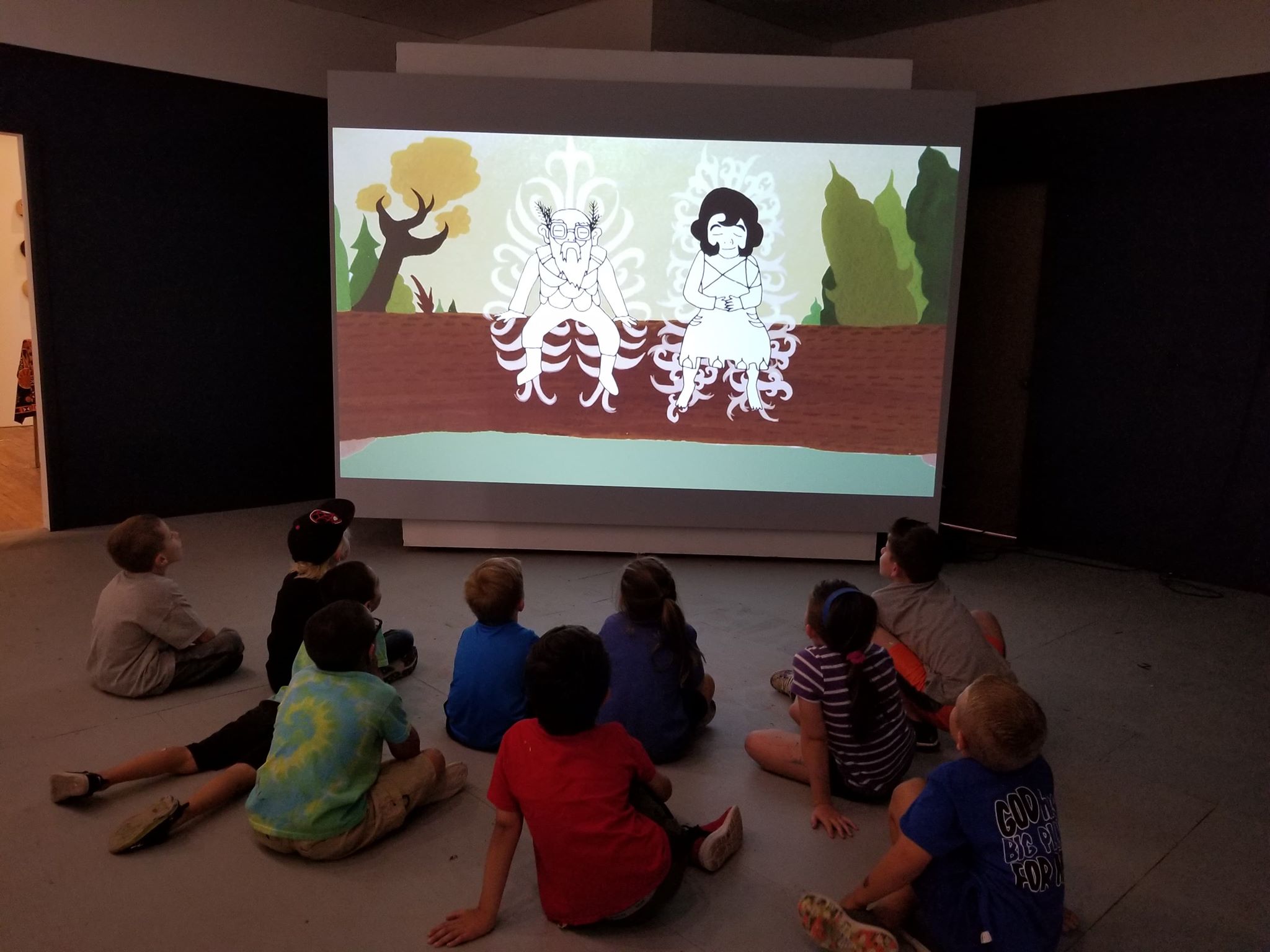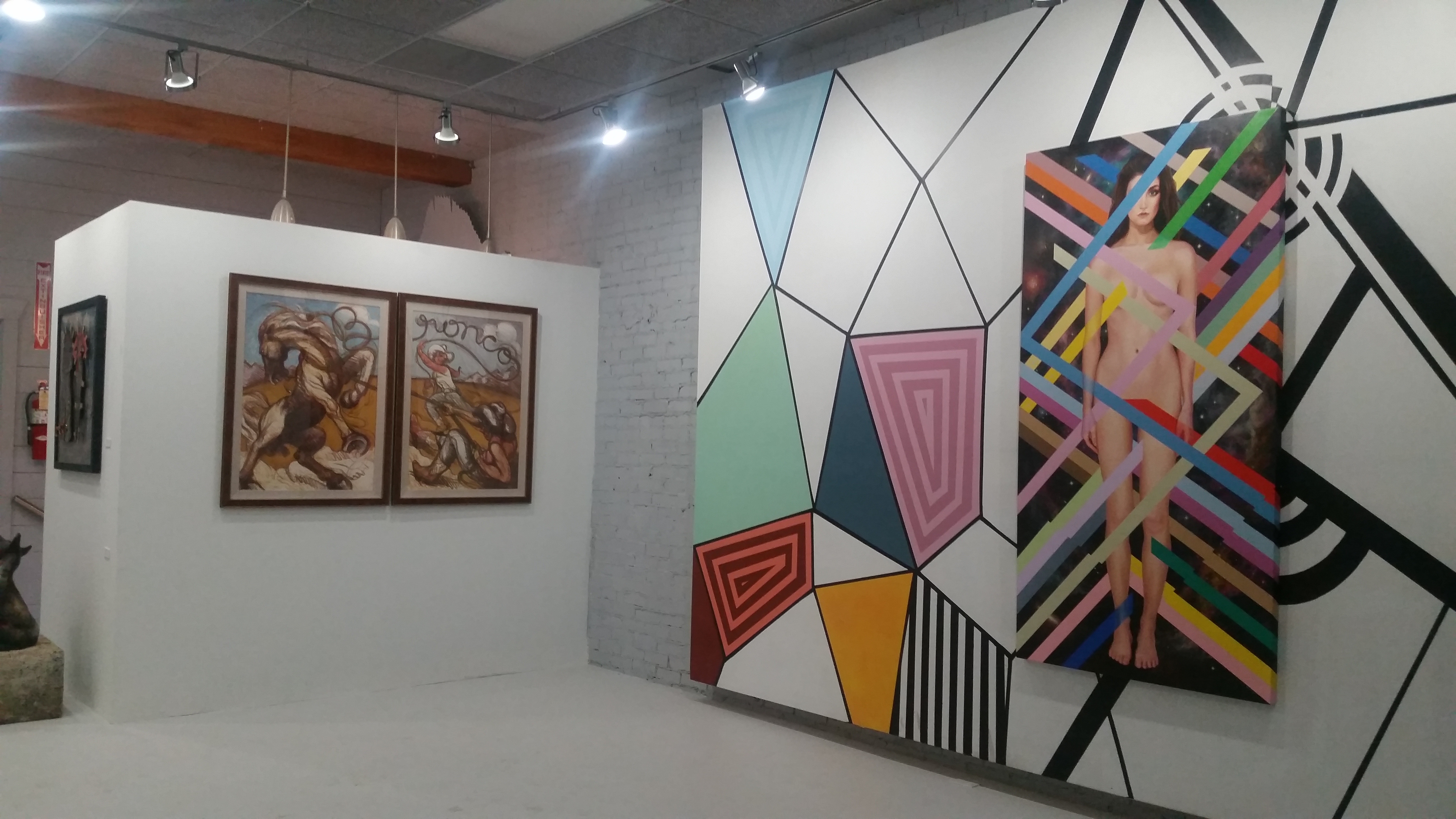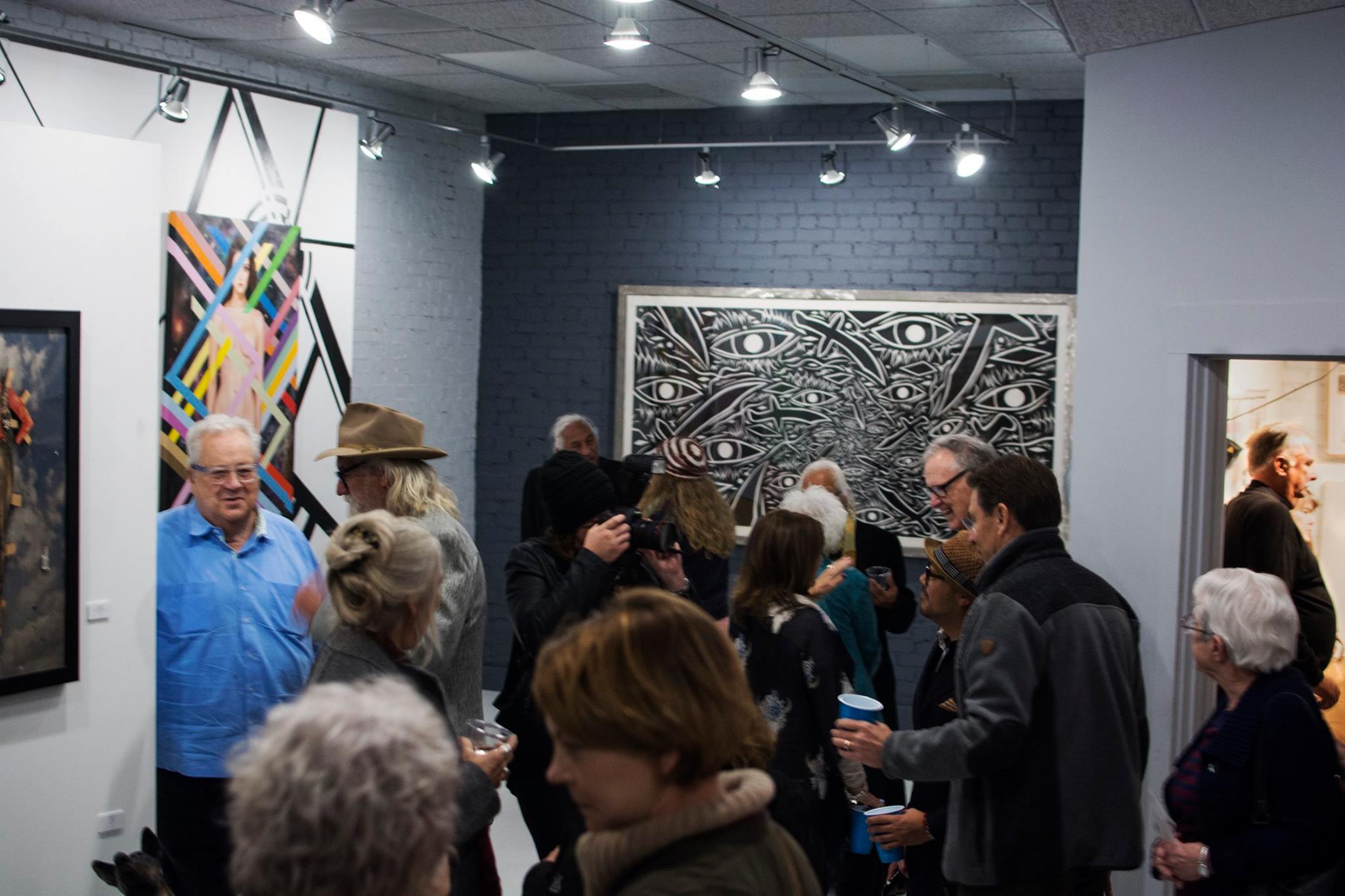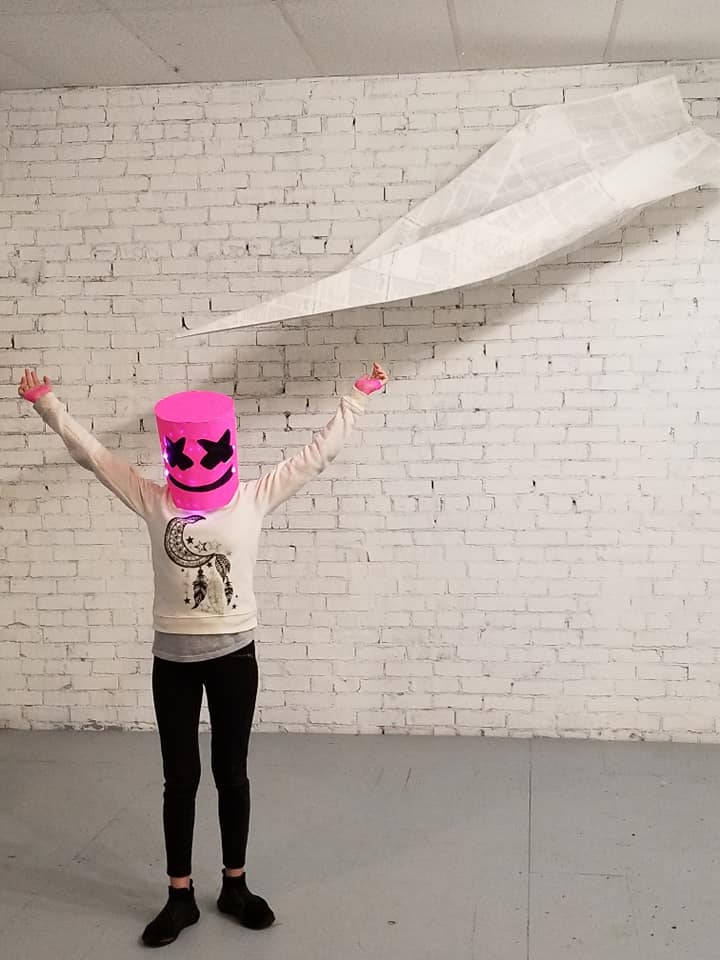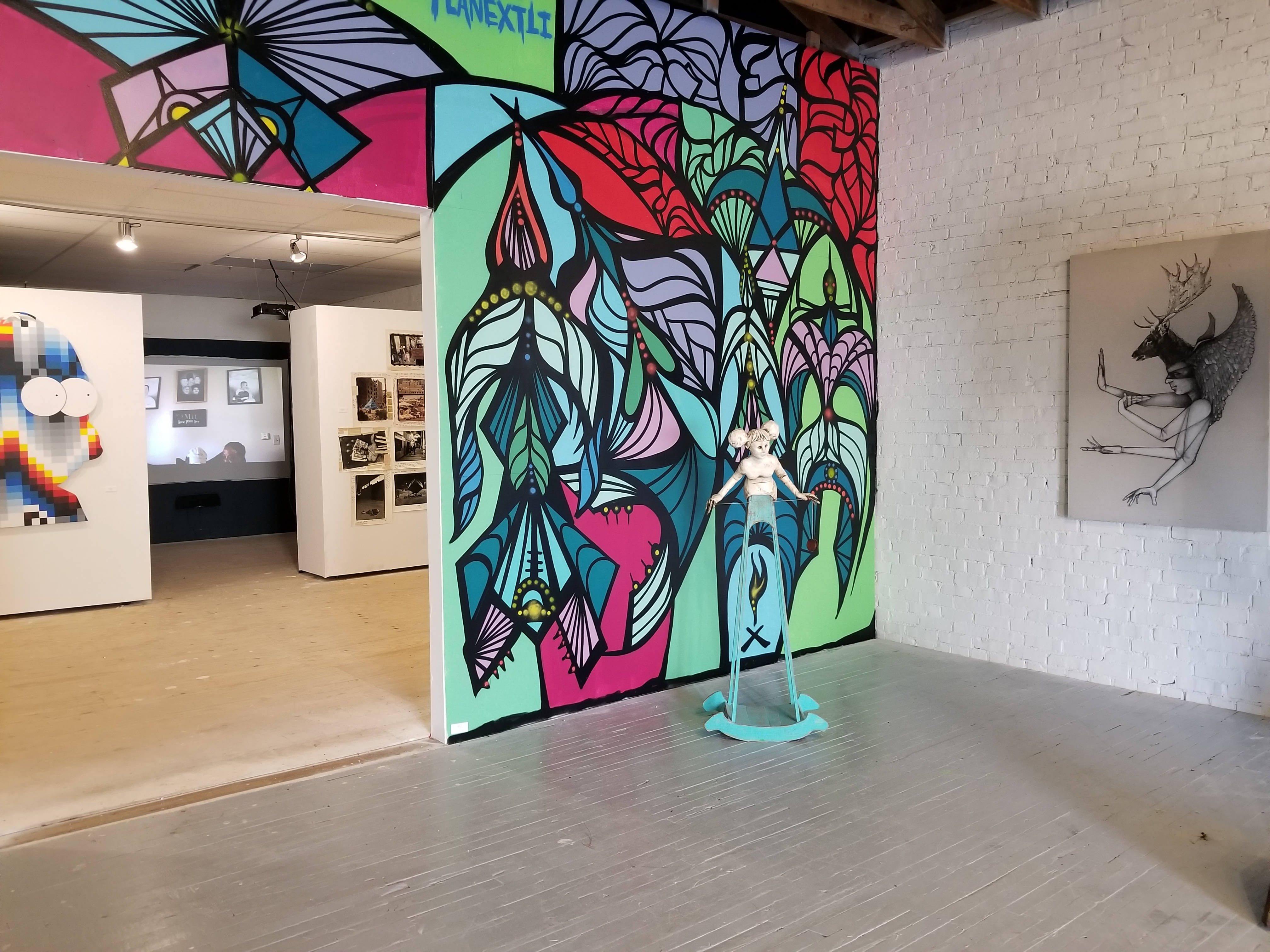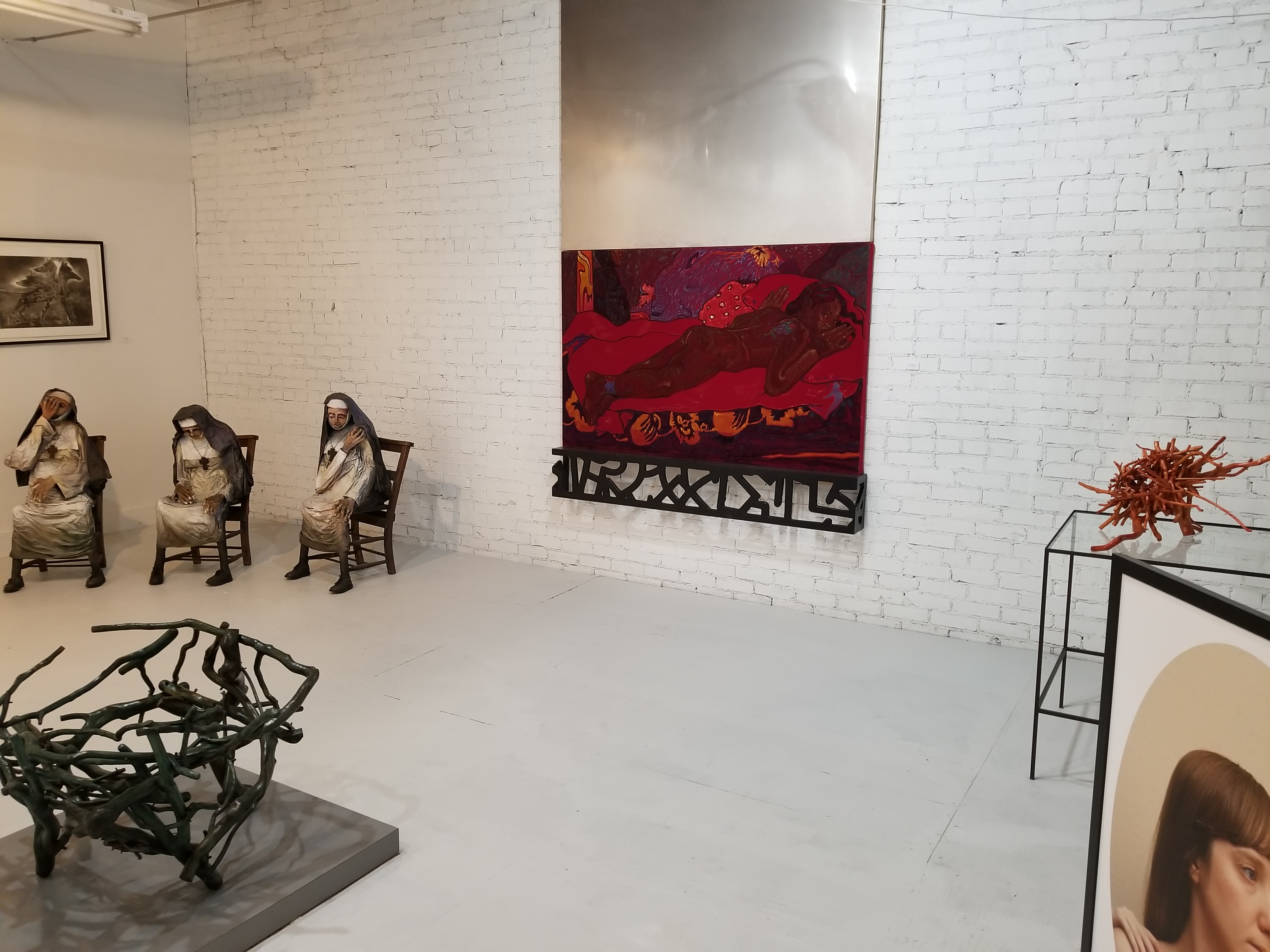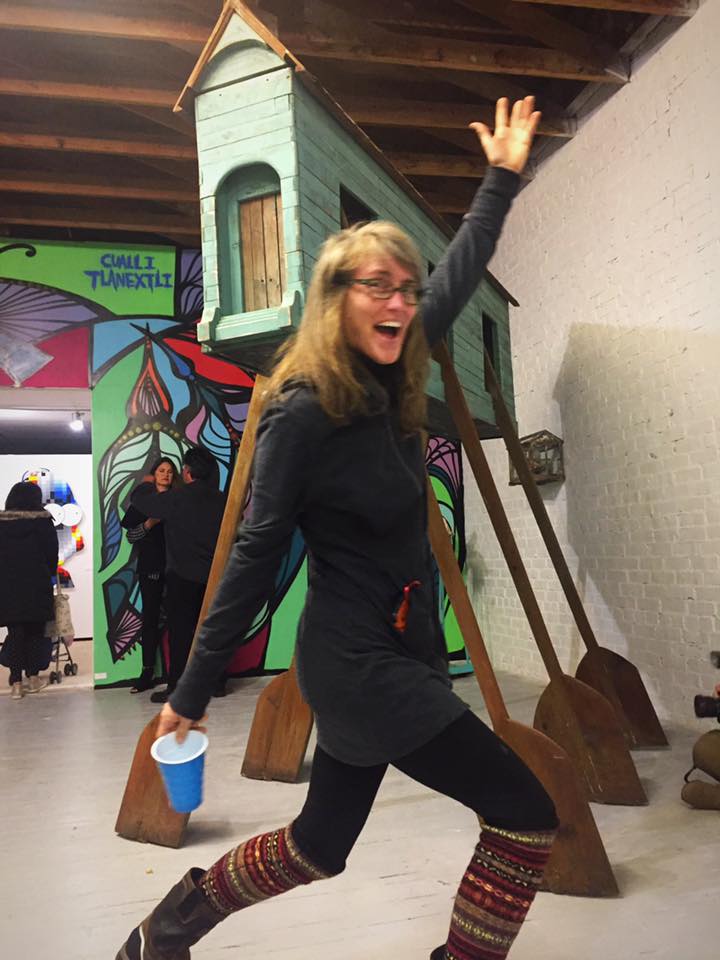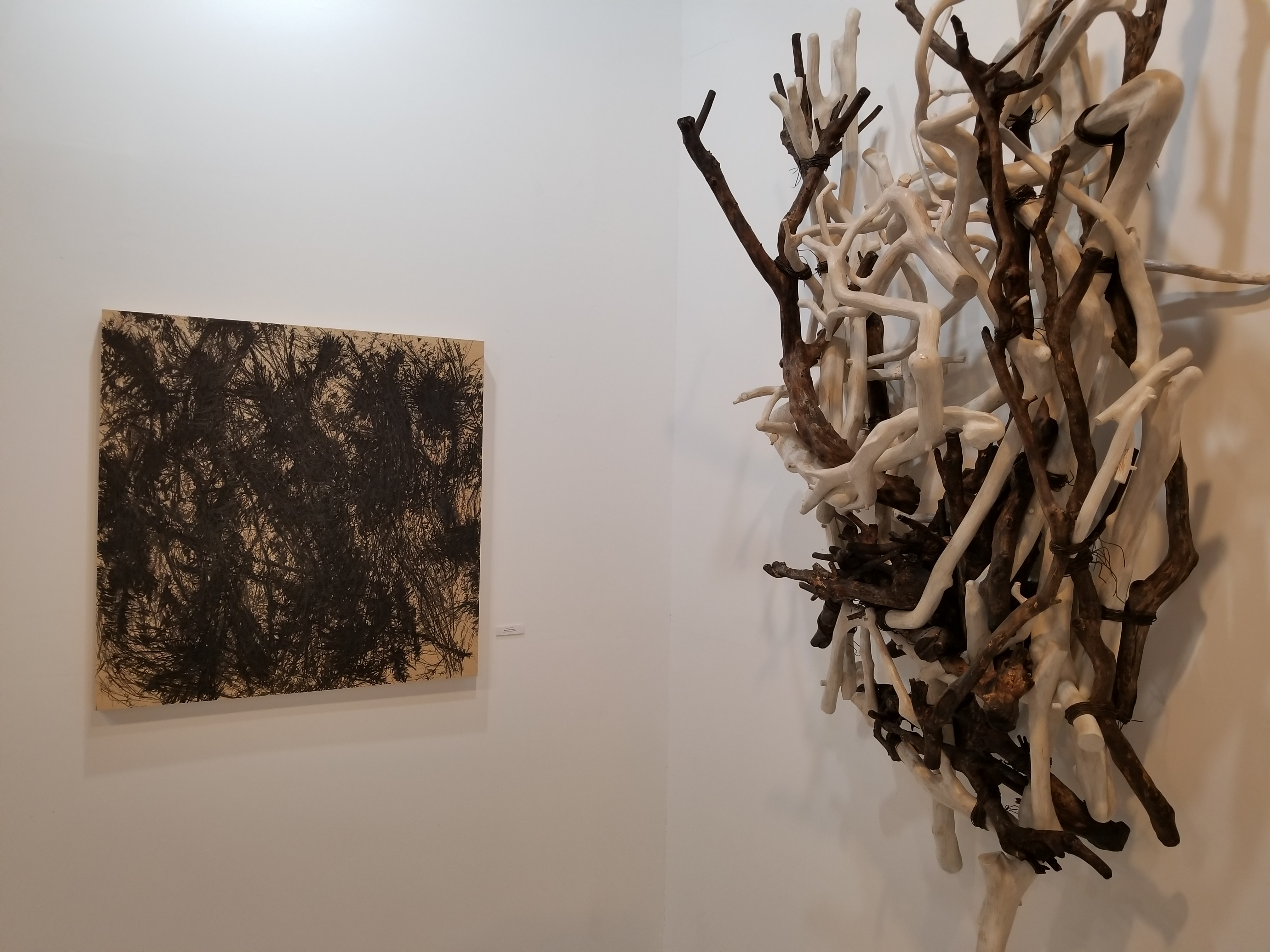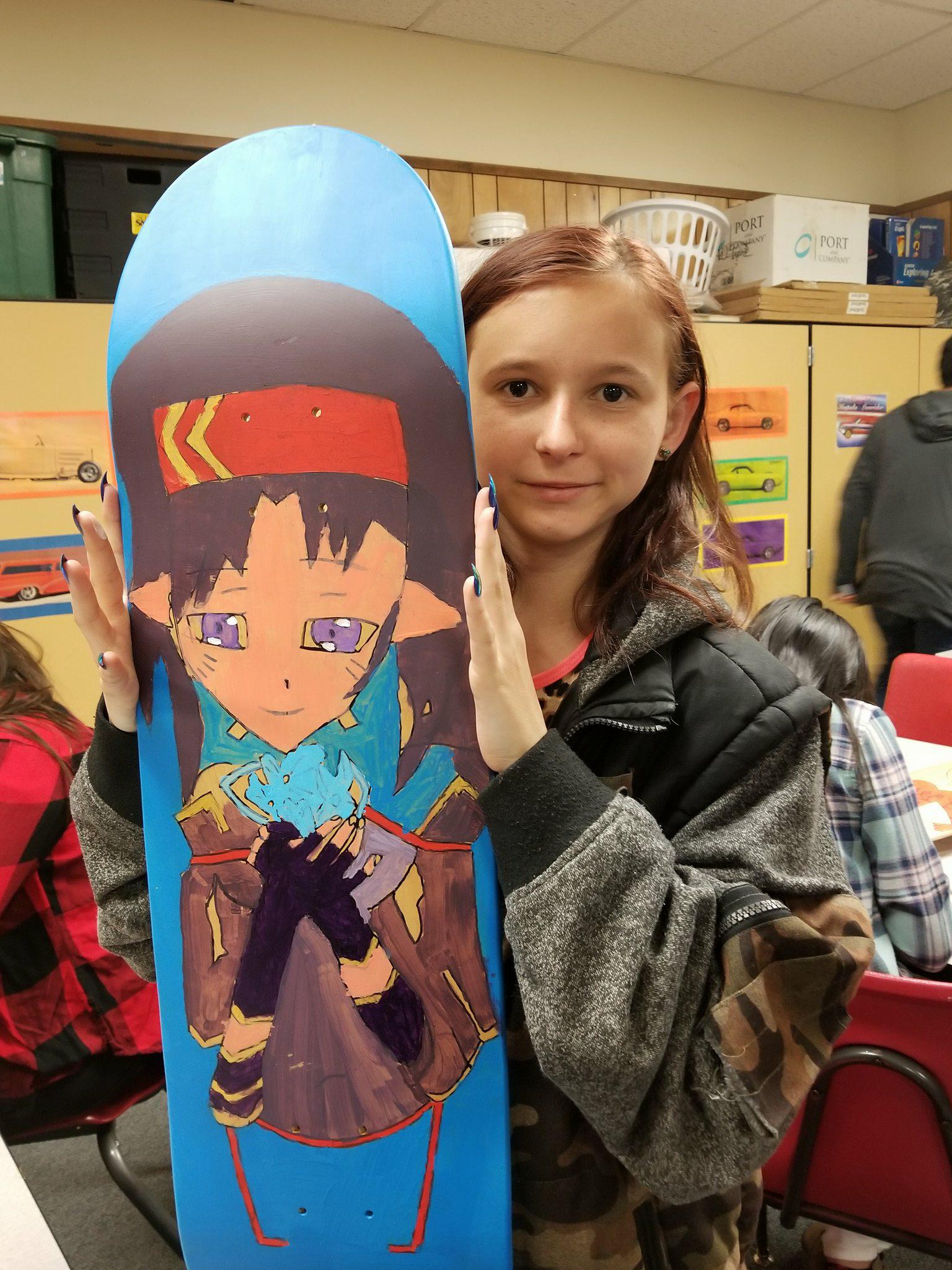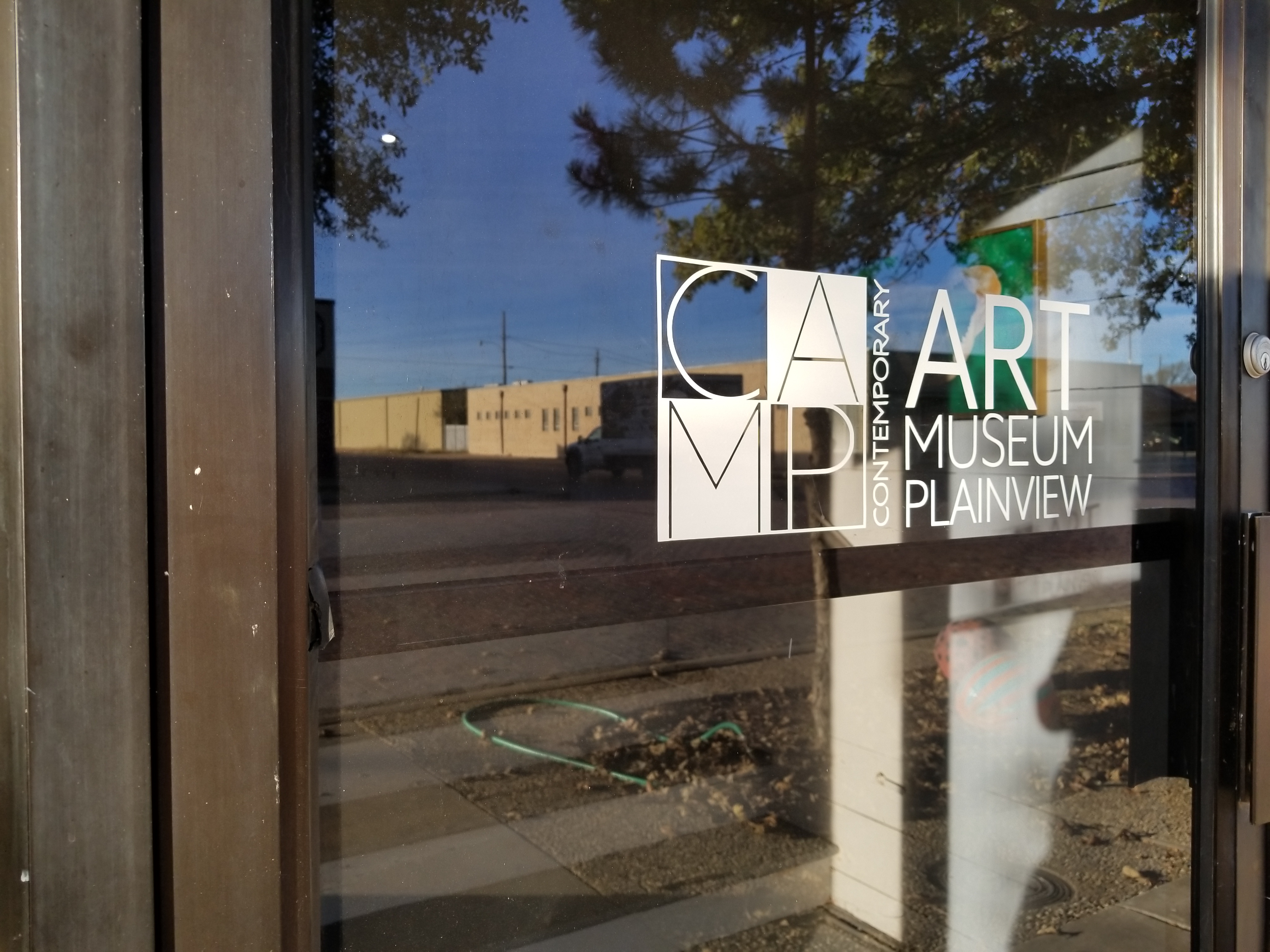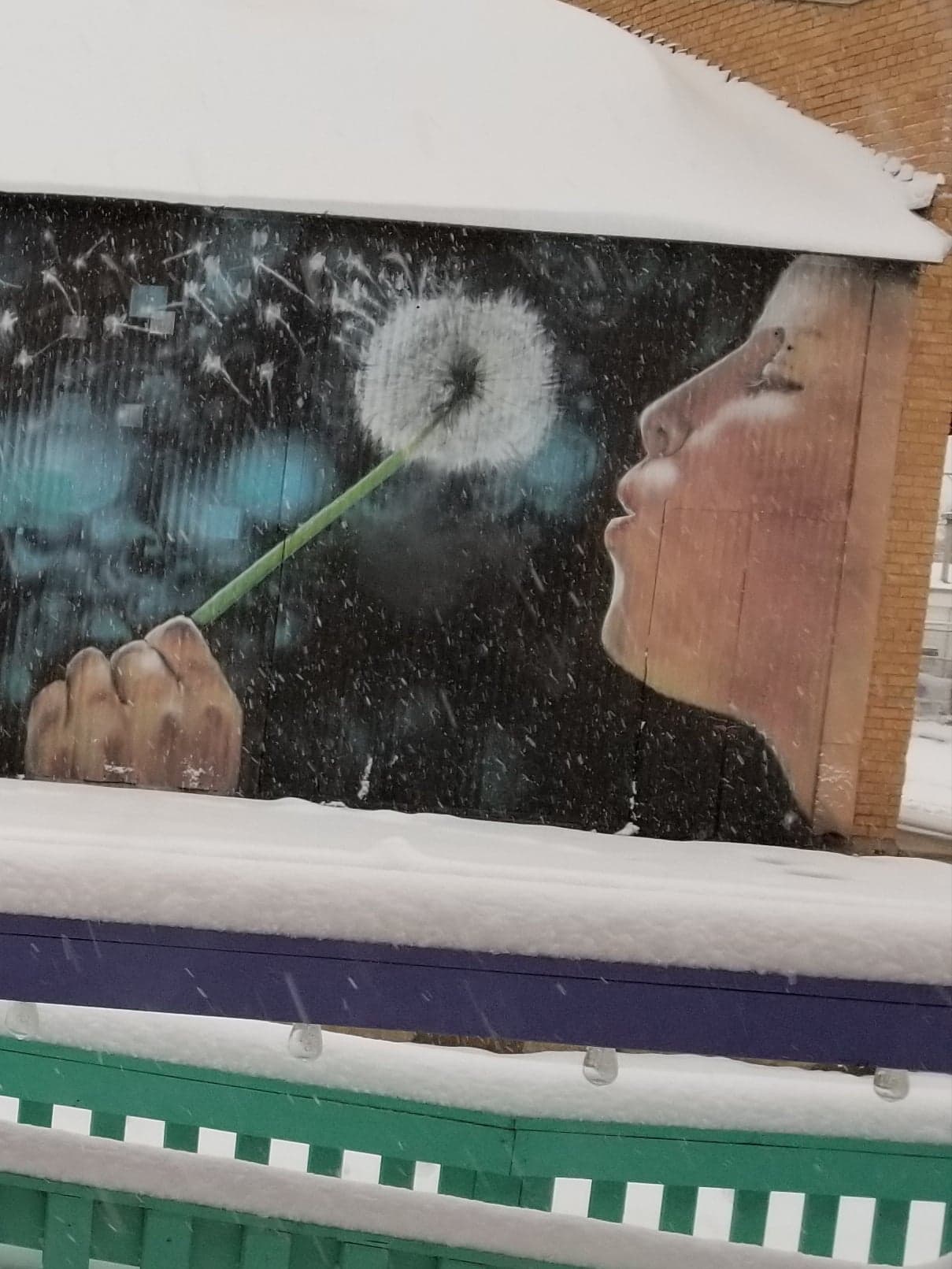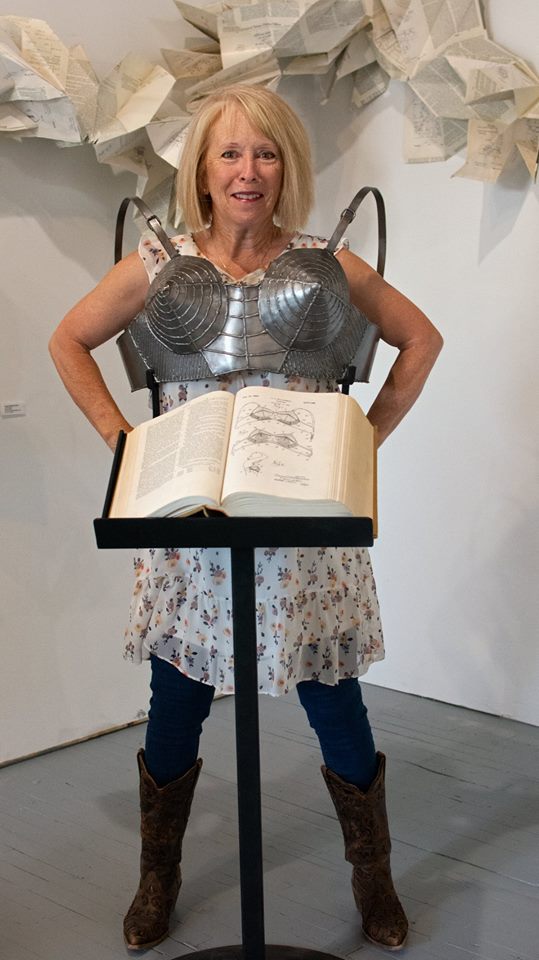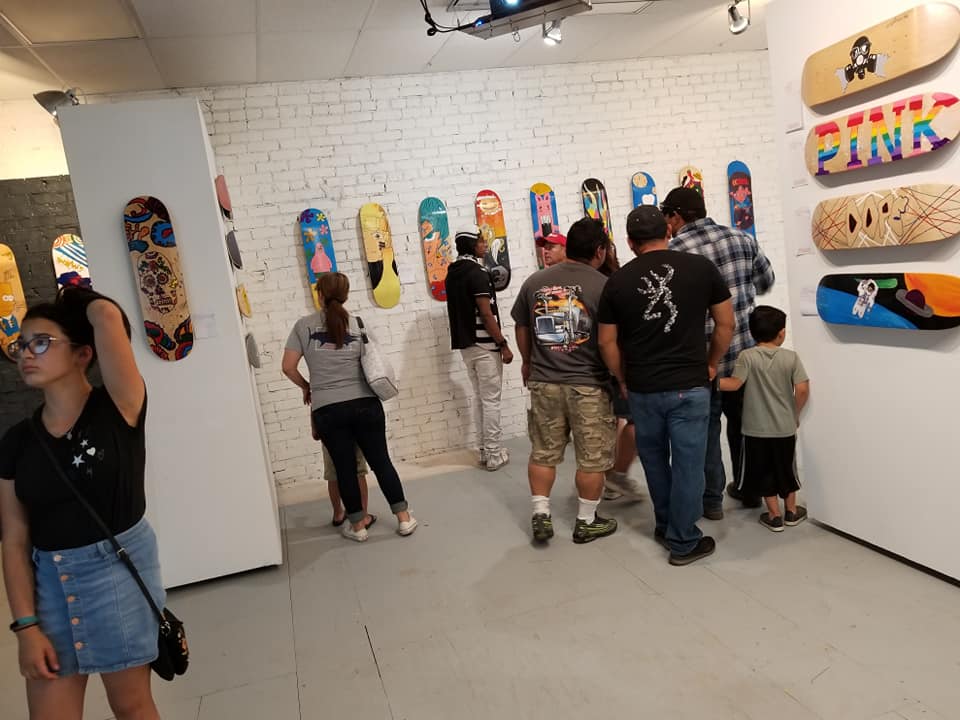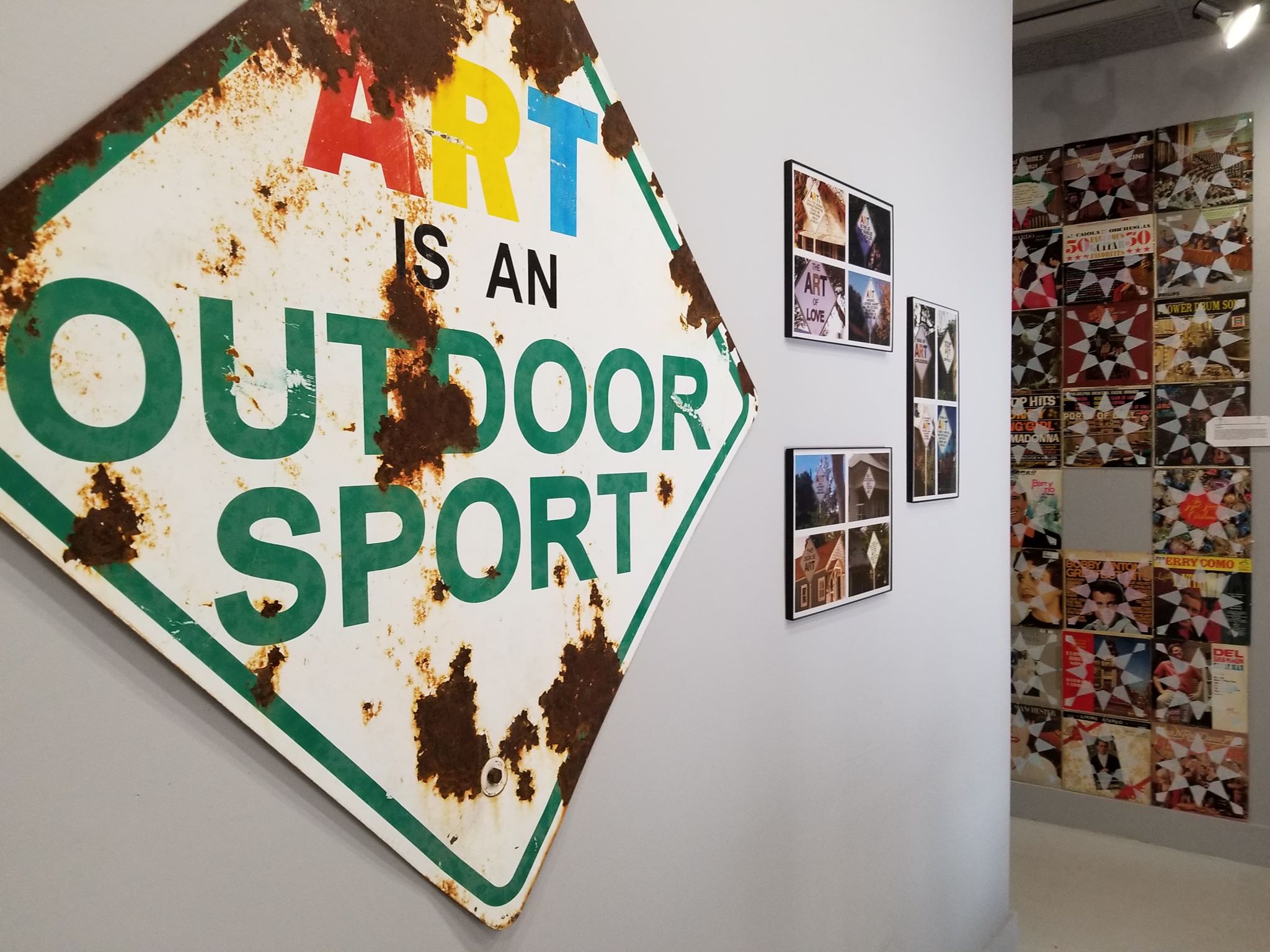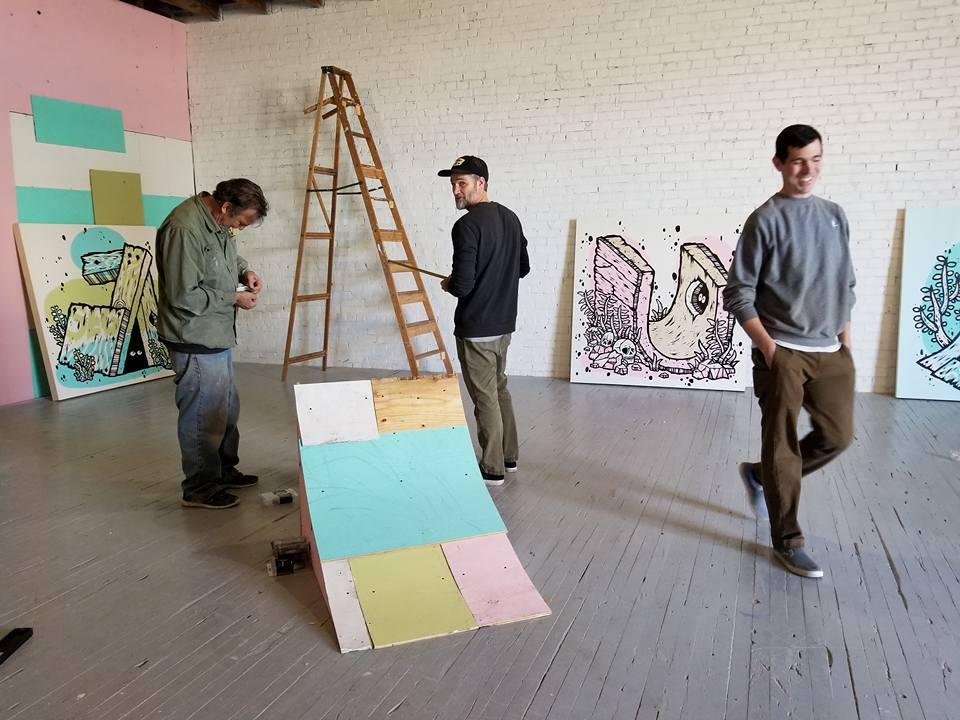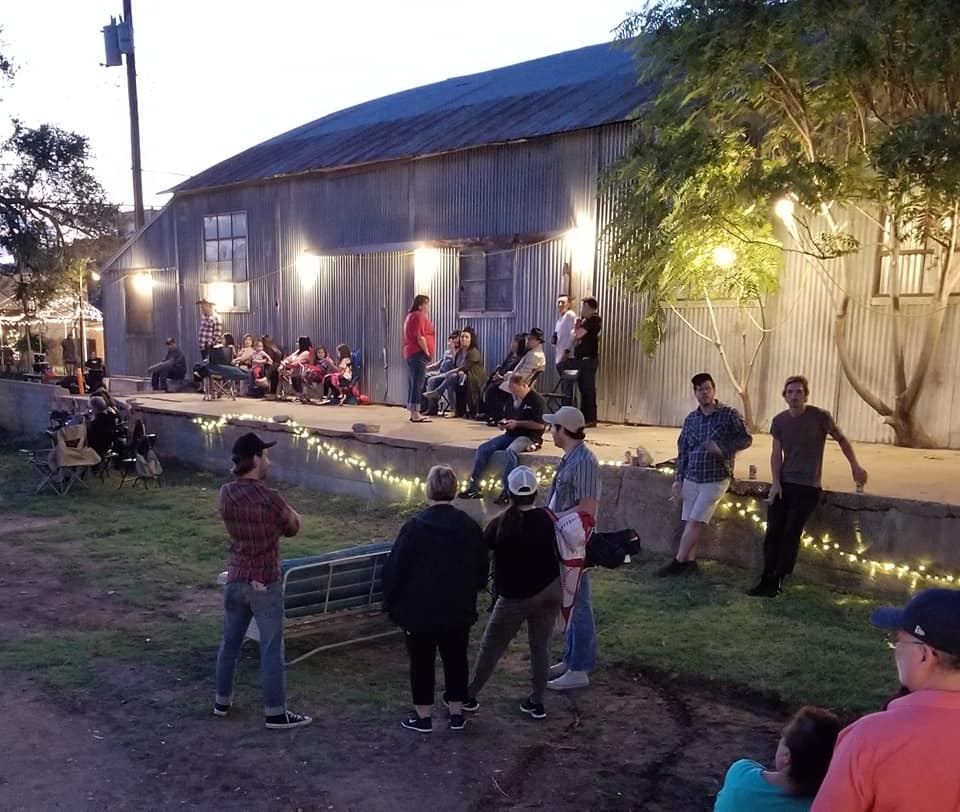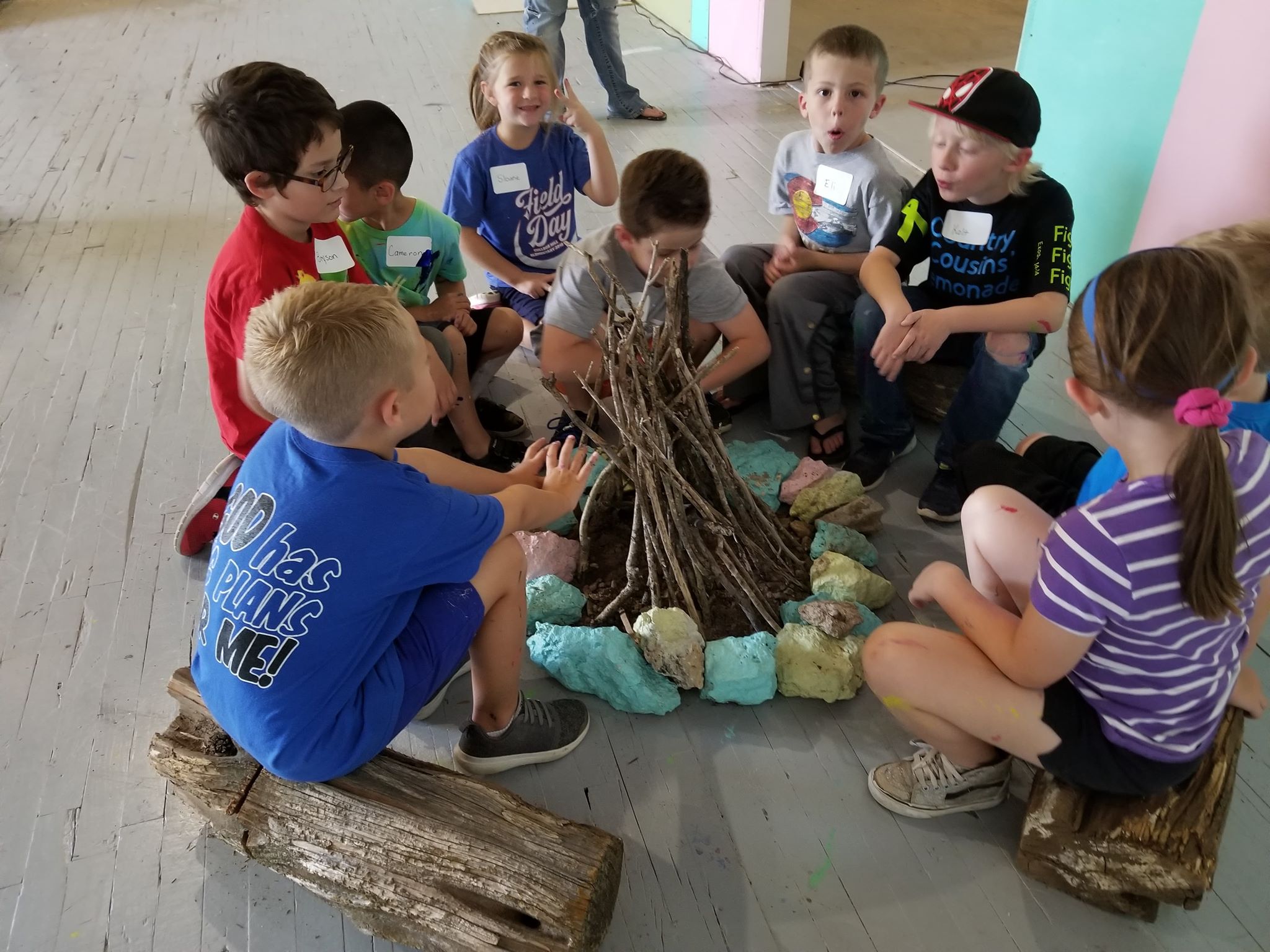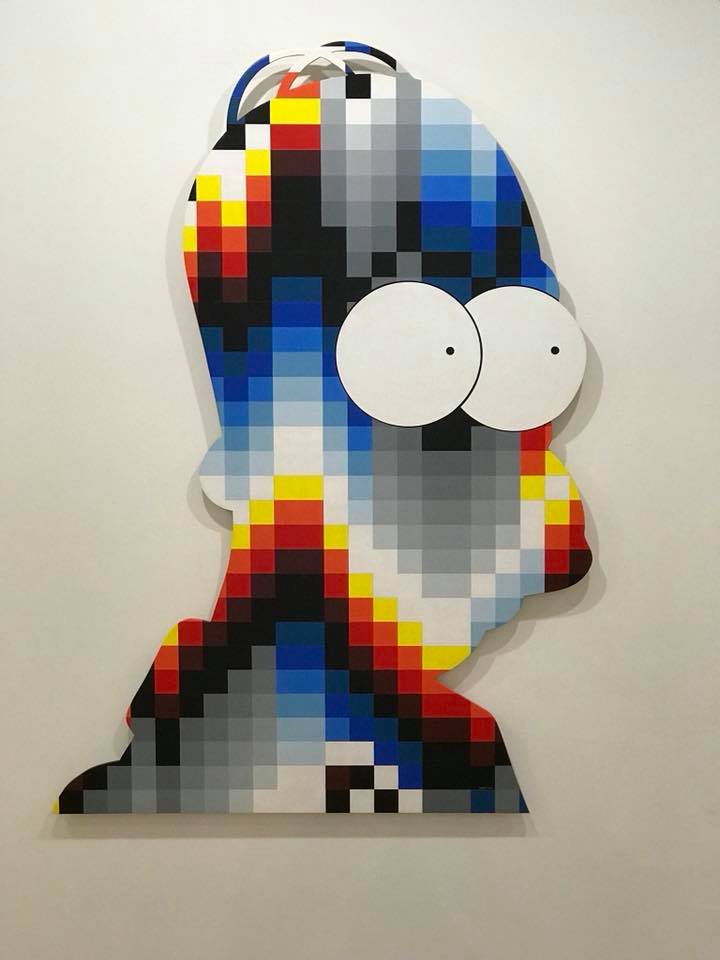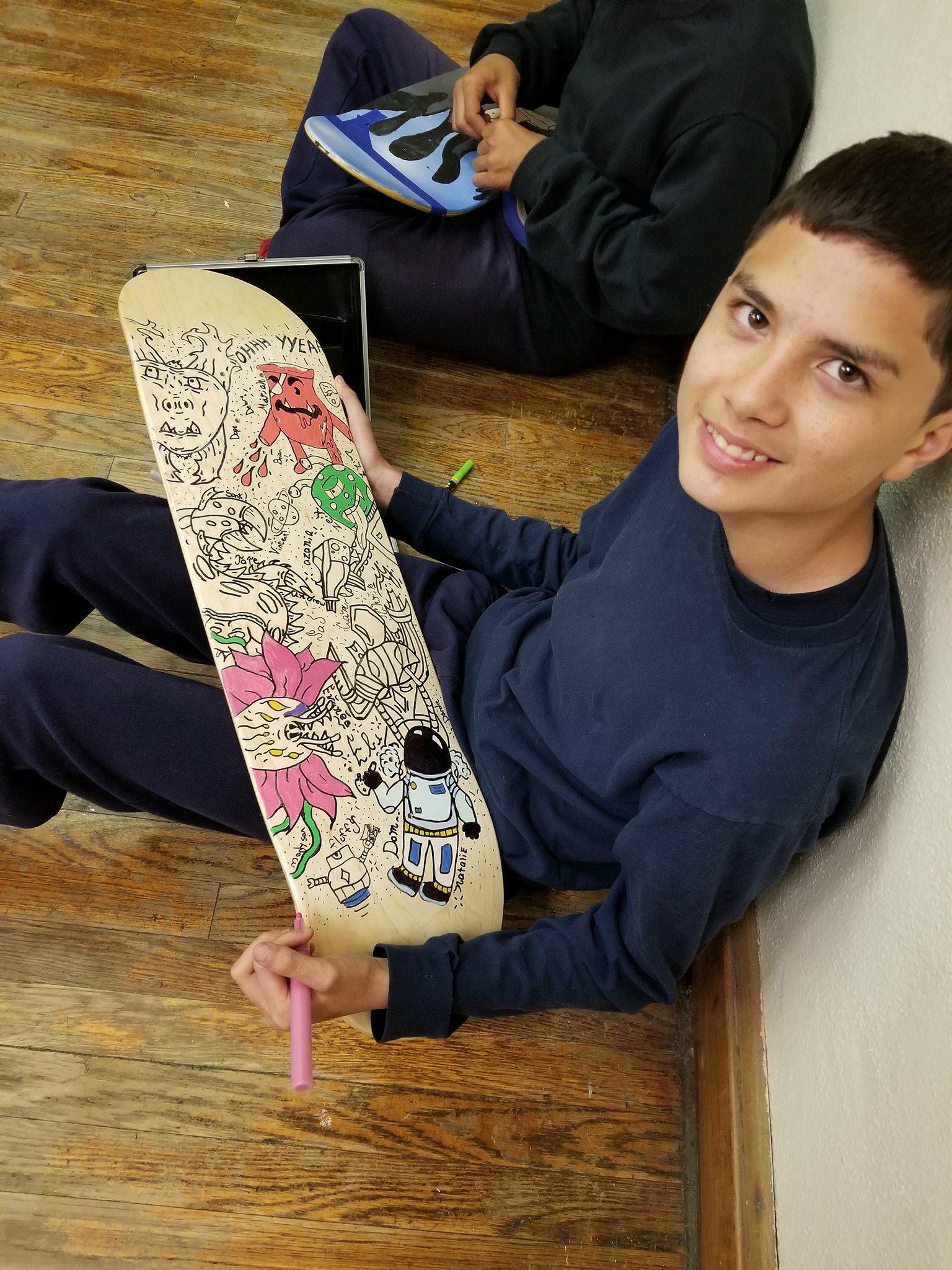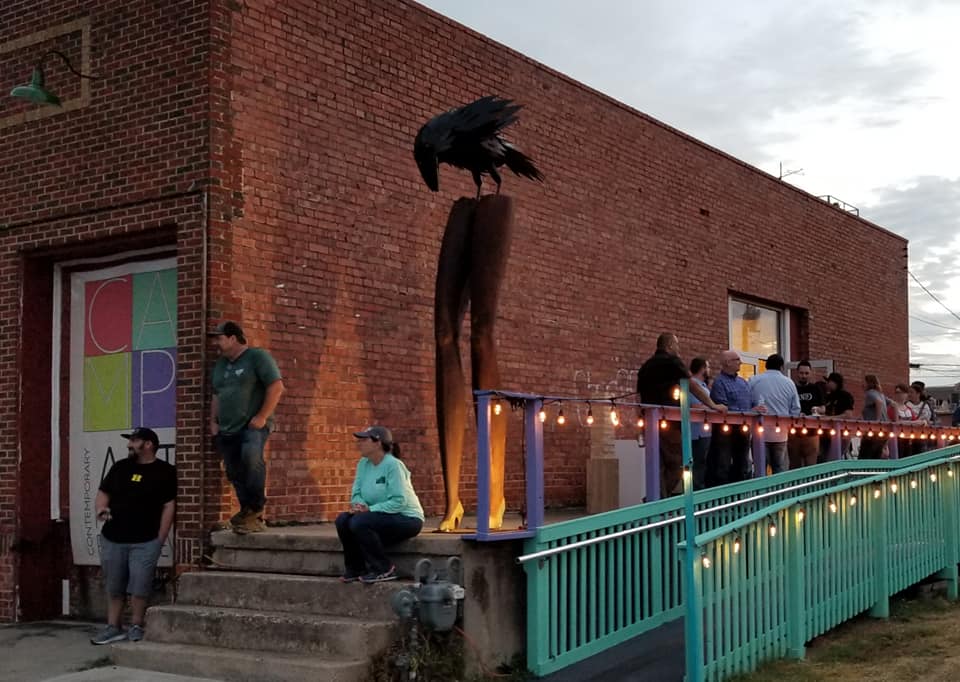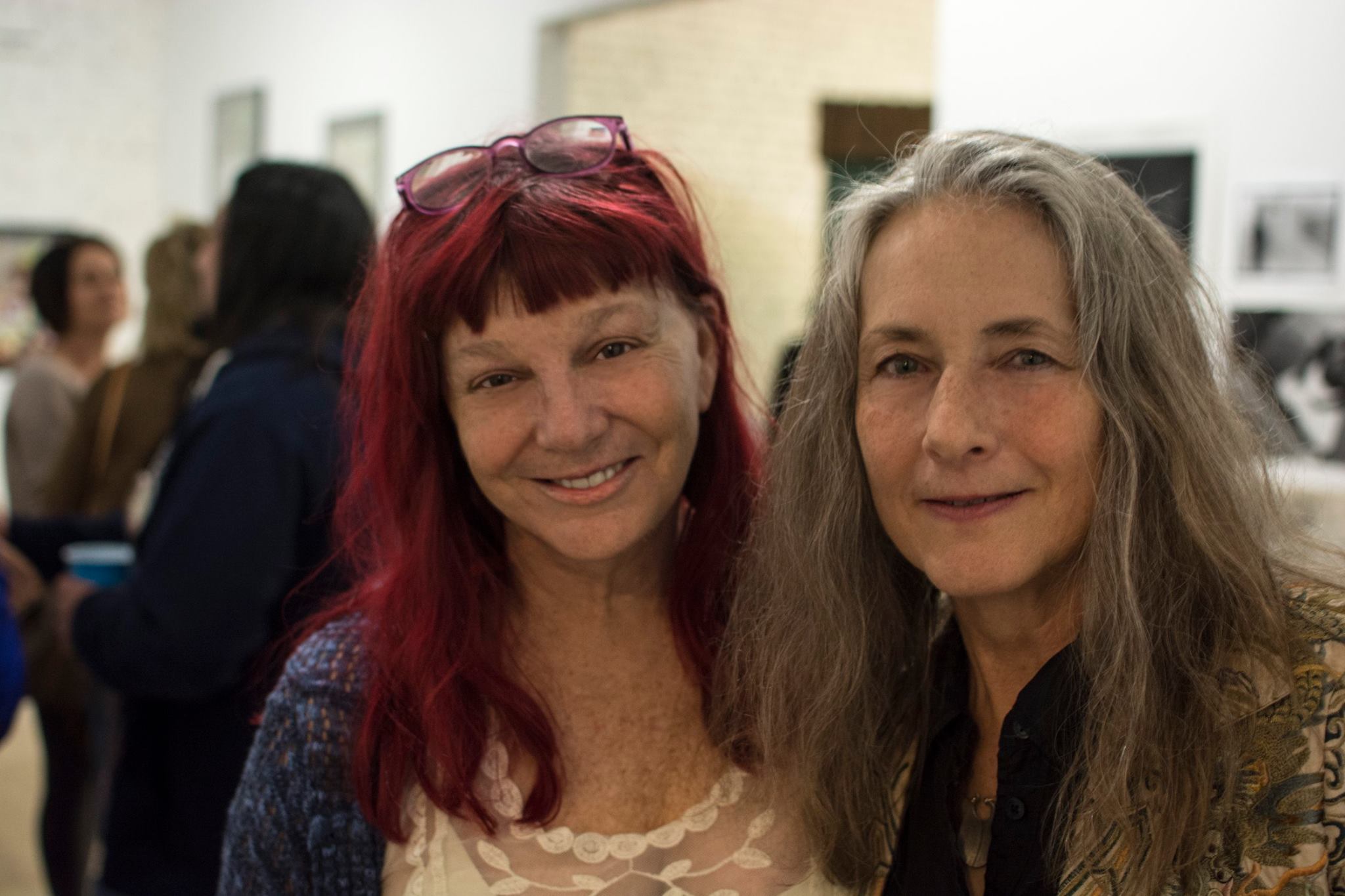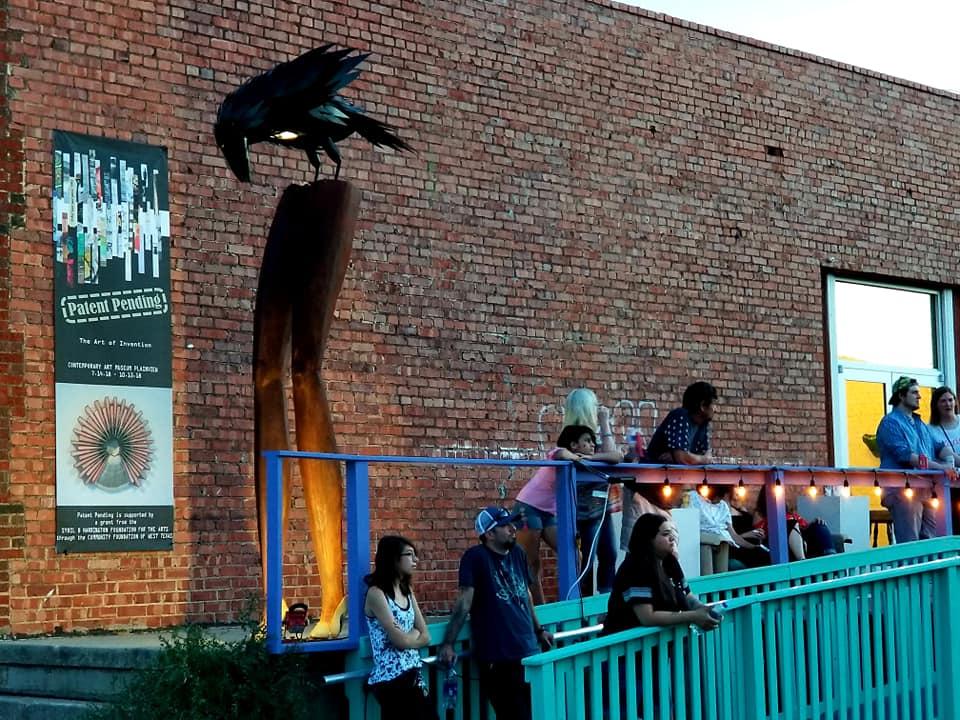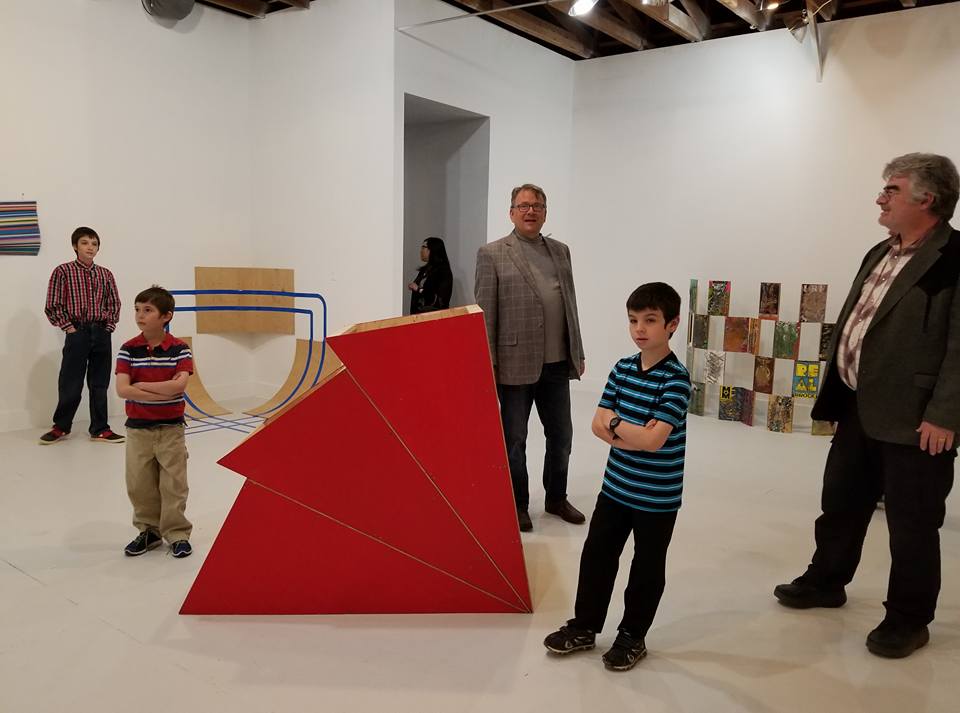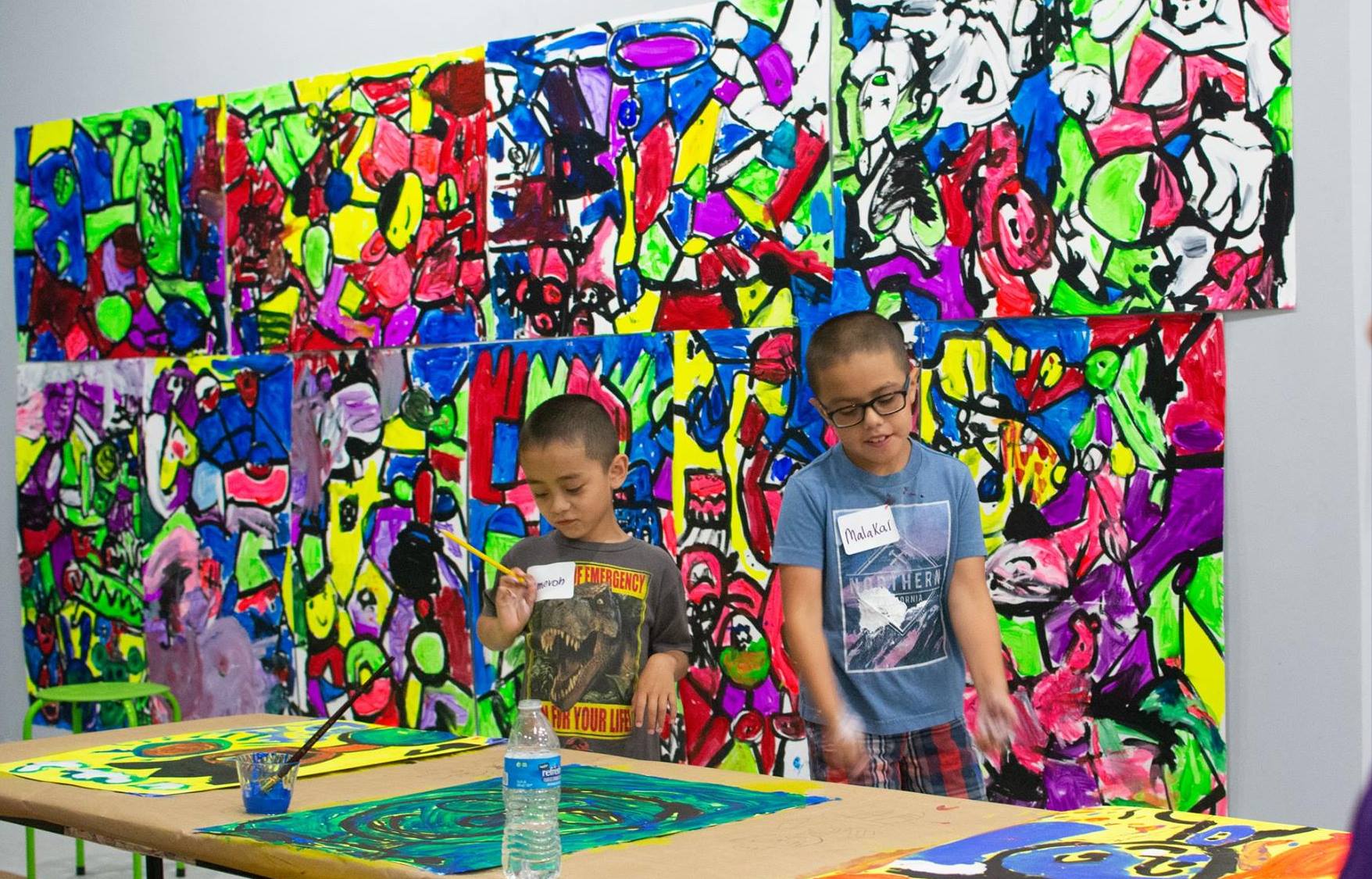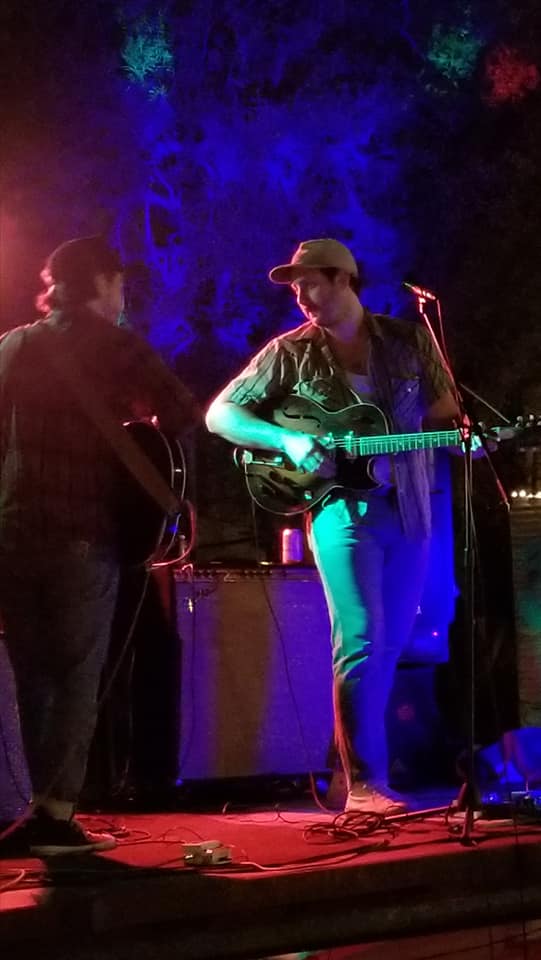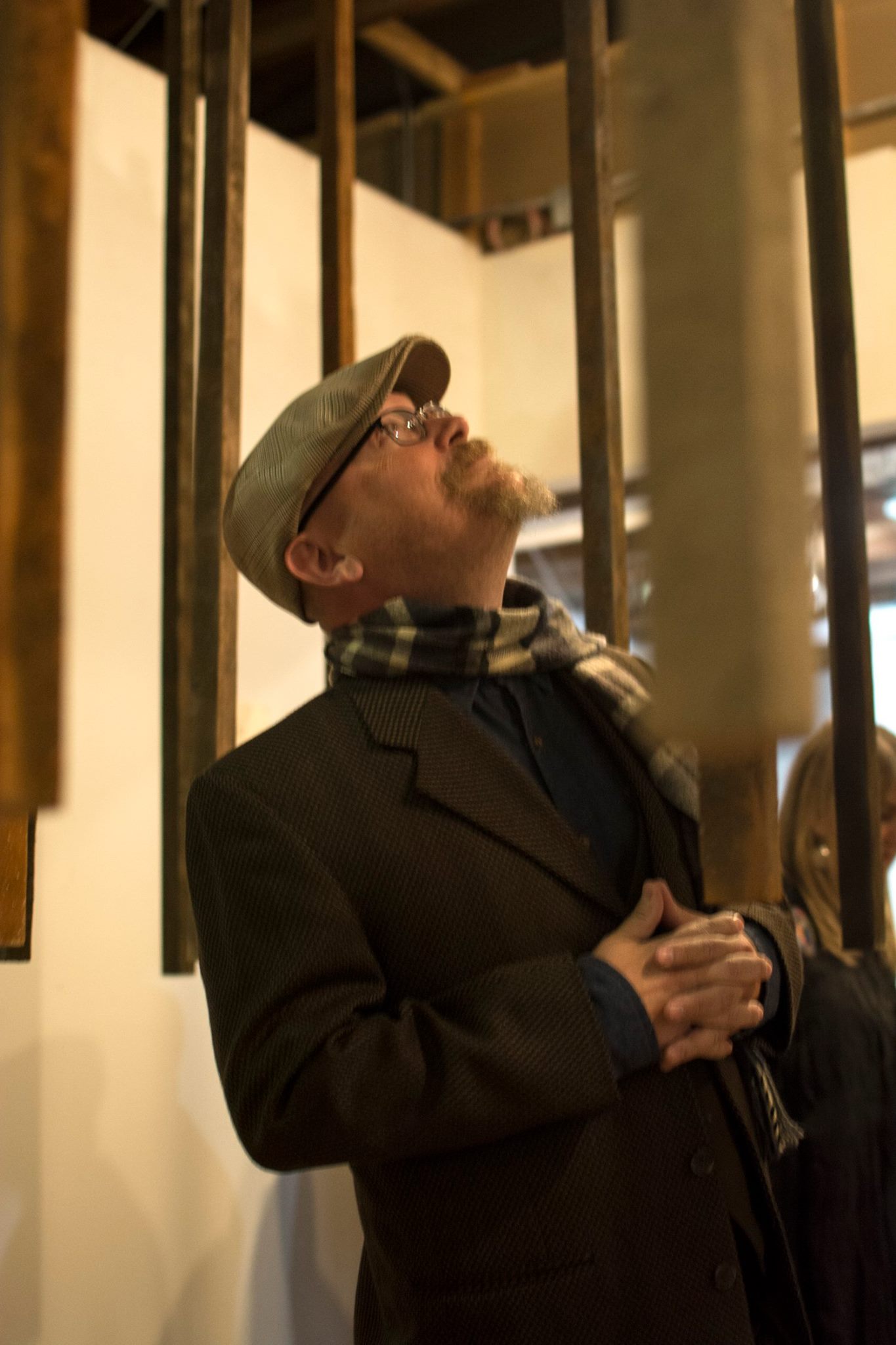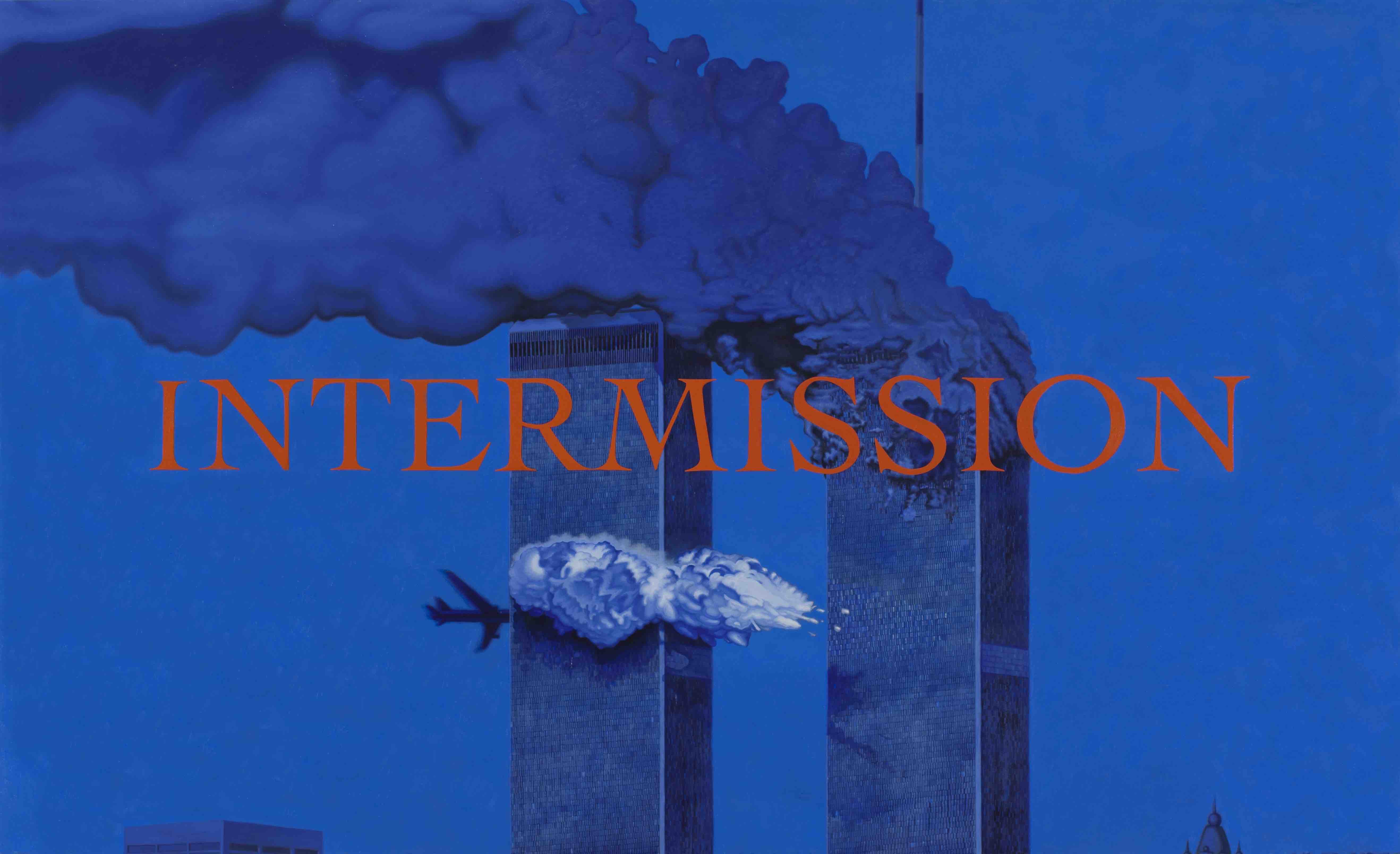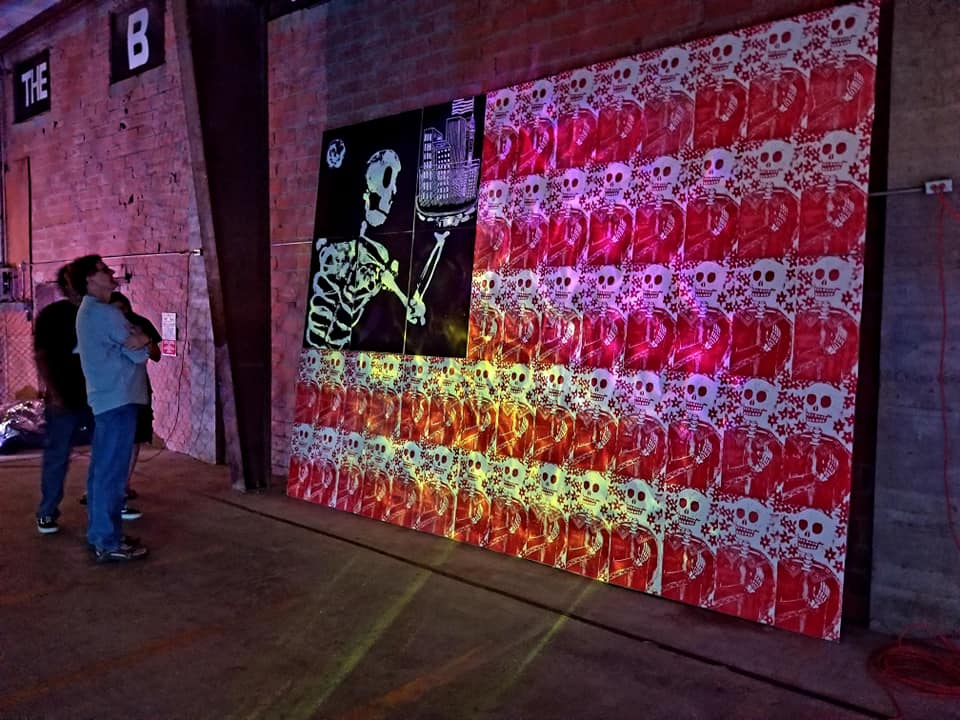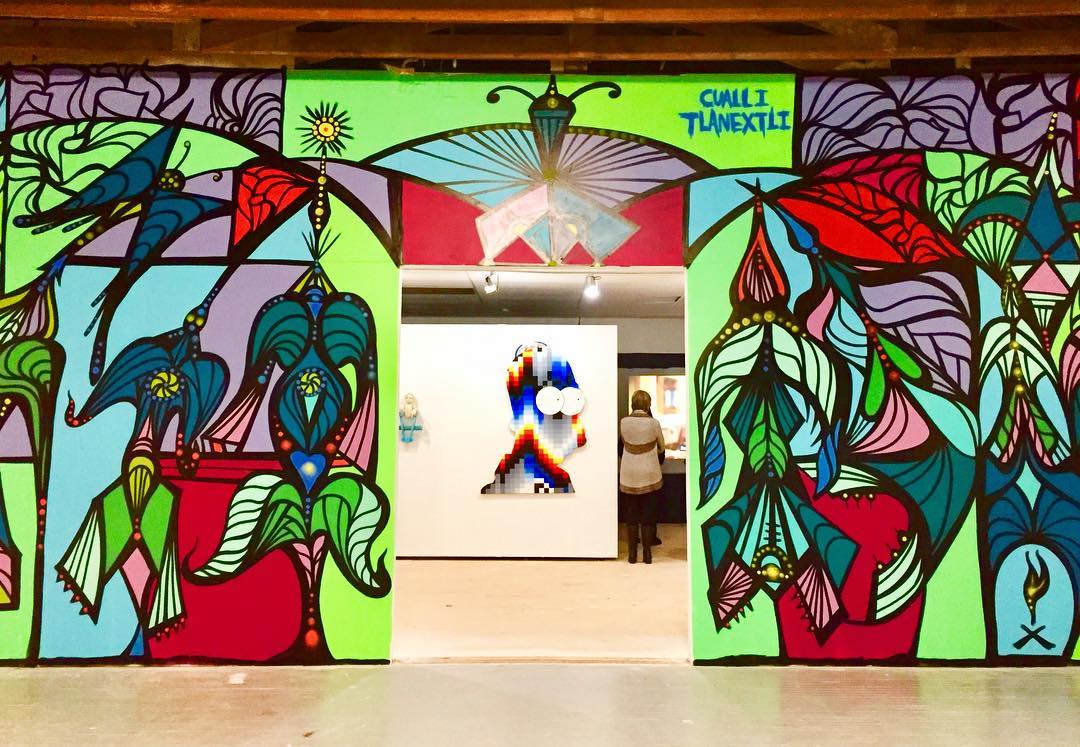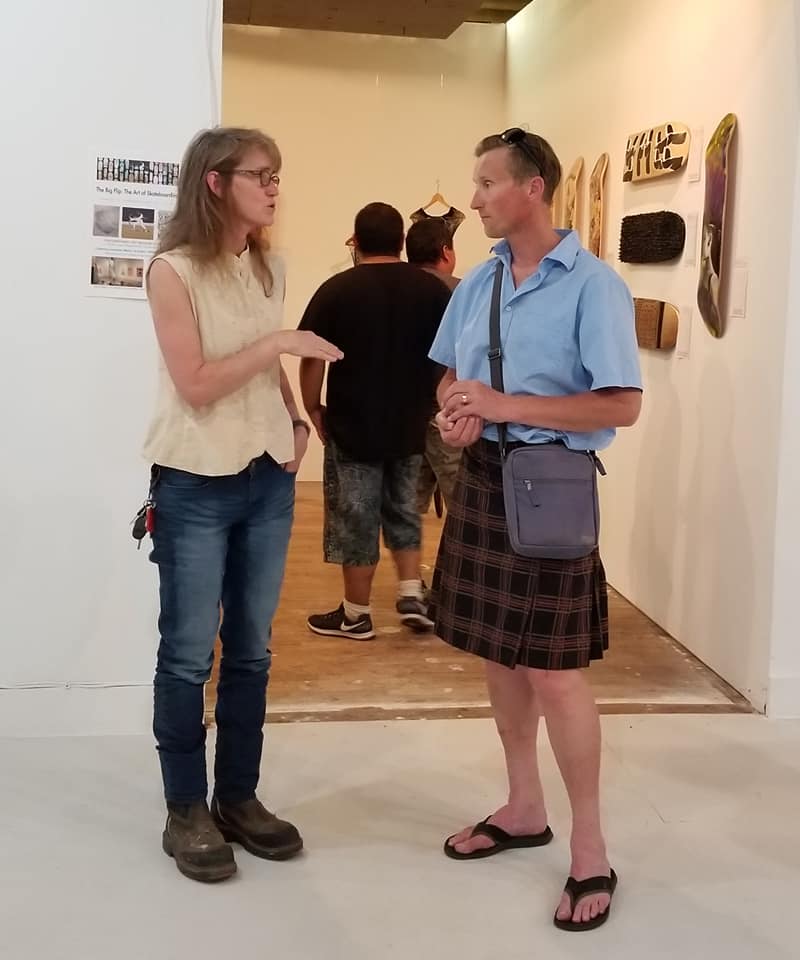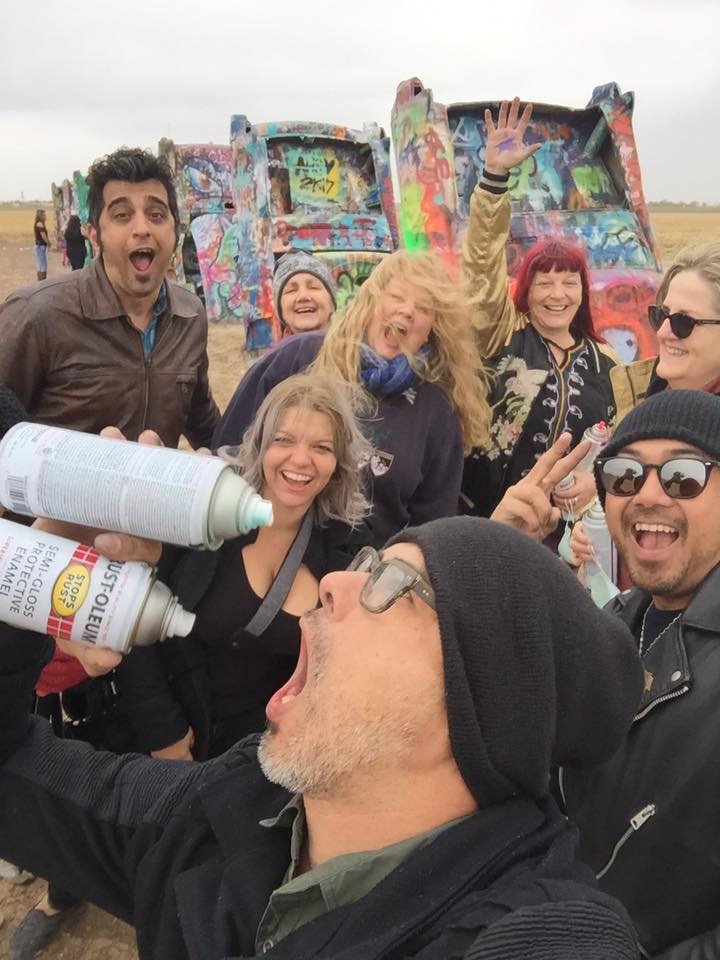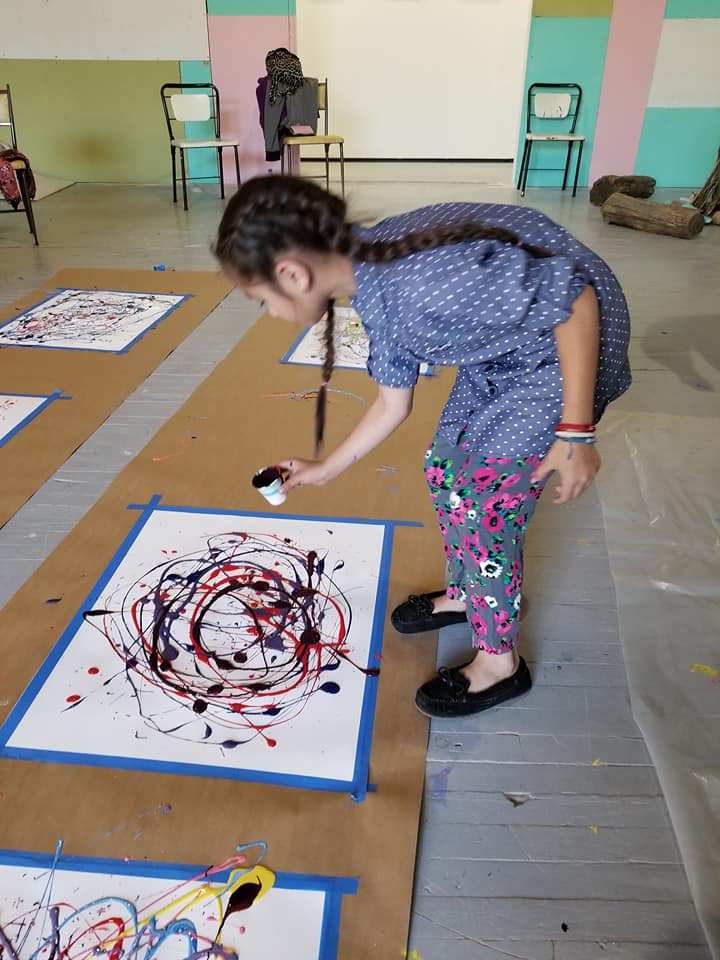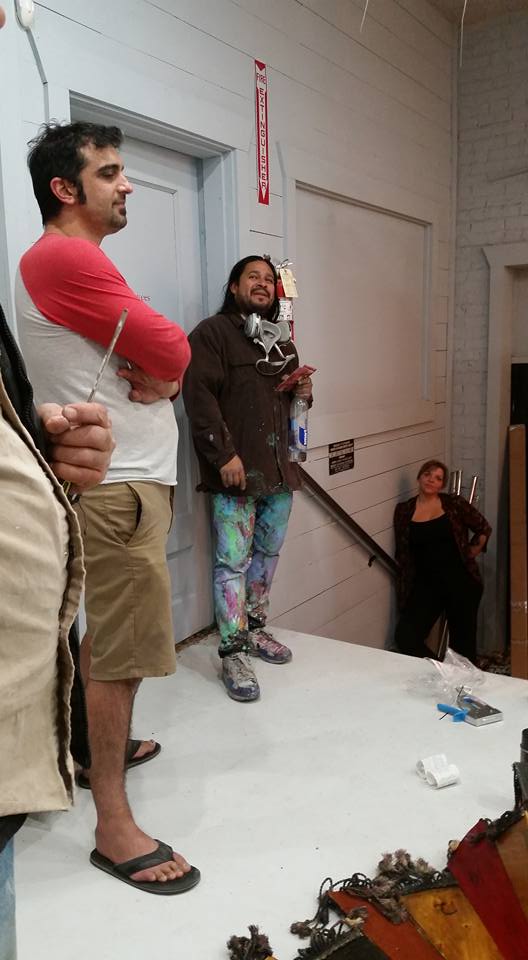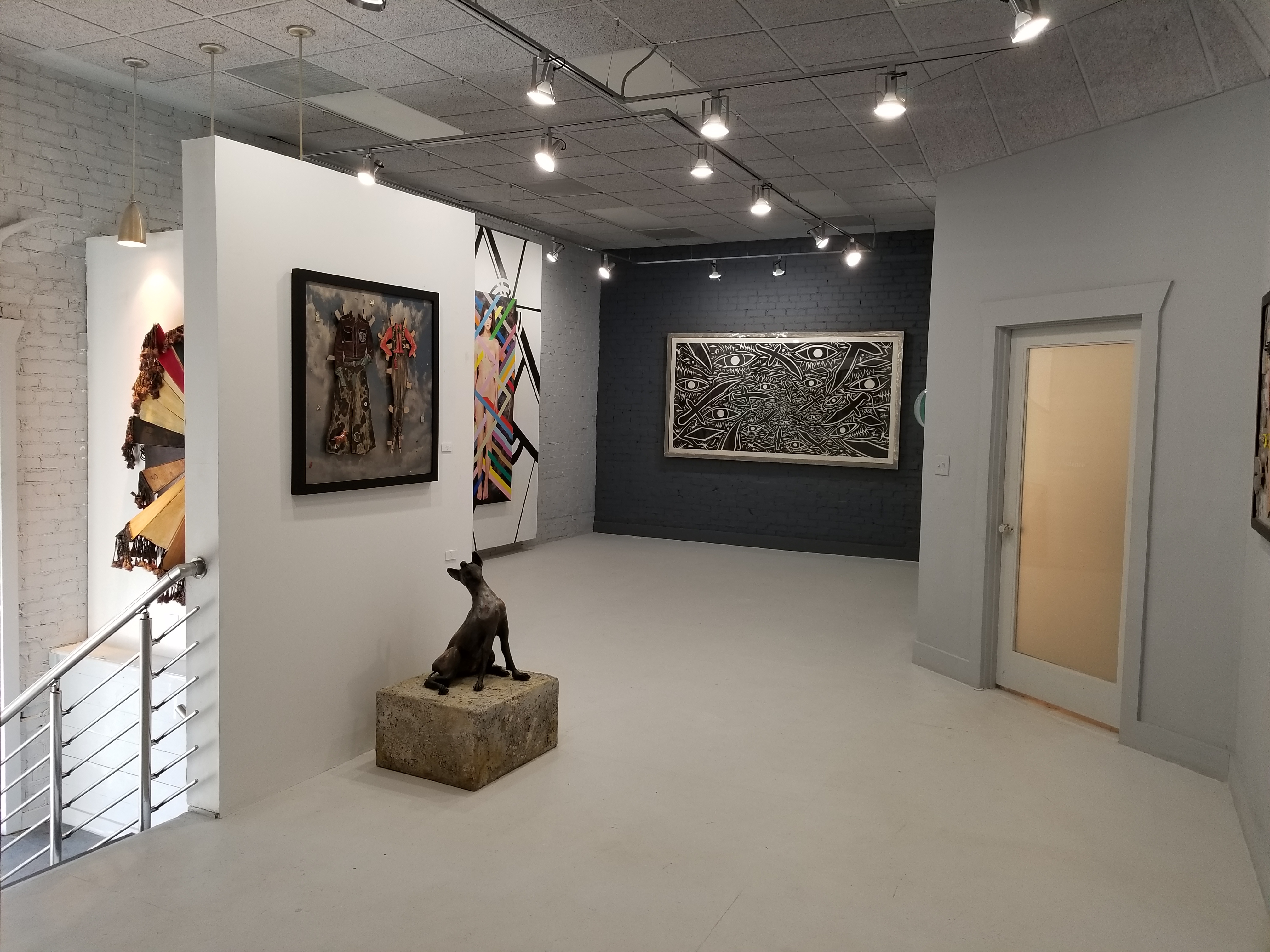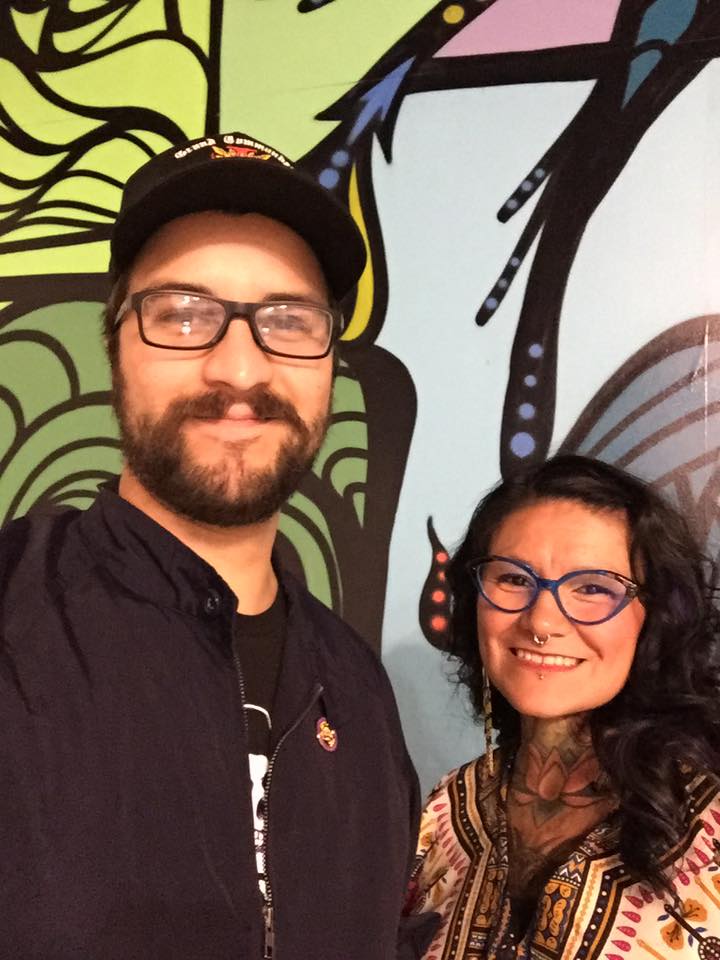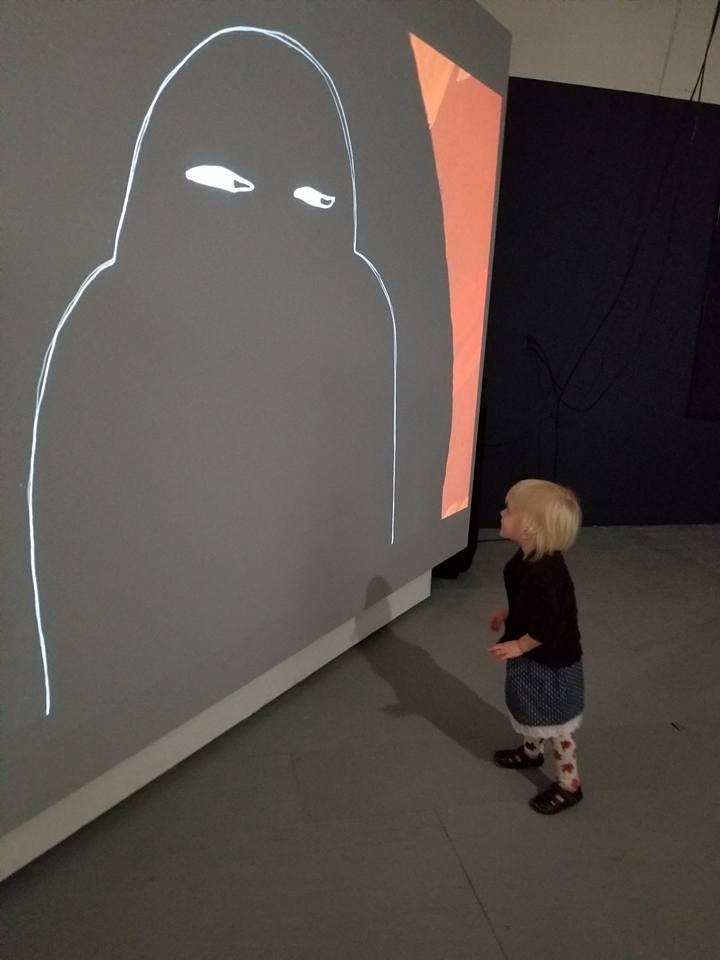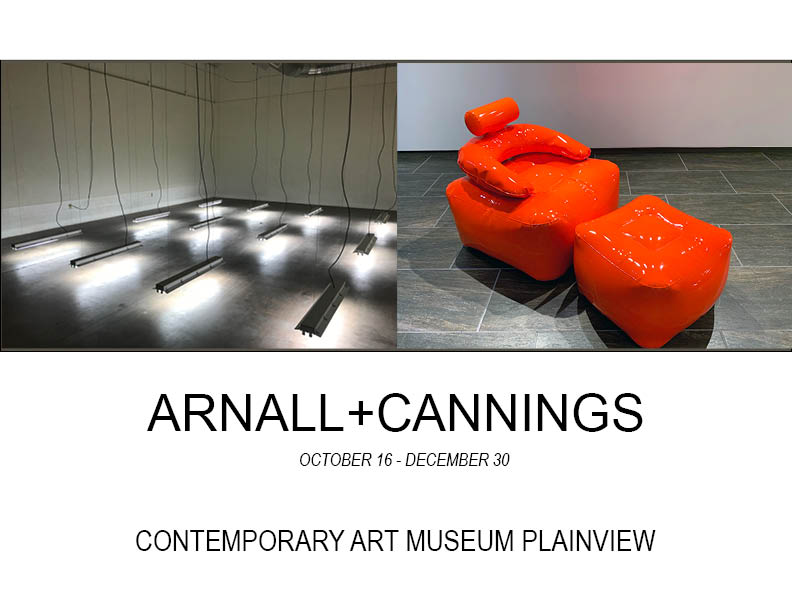
CODY ARNALL
Here we are. Where are we? (When You’re Done Dying)
2021
All components in the next three spaces are part of comprehensive installation. Installation art is a work of art that viewers physically enter and experience. I am preoccupied by human error – an action or series of actions leading to something that was not intended. I think a lot about our impending doom, how fragile existence is, and what the future looks like with or without us. The materials used in Here we are. Where are we? (When You’re Done Dying) are readily available at mega hardware stores across the country and were chosen because of this. As a maker, I take them for granted.
I manipulated them to resemble a parking lot sign, awning, and interior ceiling lights like those found at and in strip malls. The sign and awning materials mimic metal and concrete and would typically have signage advertising a business. Maybe they once advertised a small bookstore, deli, hardware store, or pharmacy. Now these pieces light up and advertise nothing.
As you move through the back three CAMP galleries, the sign marks the parking lot, the awning marks the entrance, and lights hung low to the ground signify the inside of this mysterious and empty place. You meet each of these pieces in an unusual manner. The sign is pulled up from the ground by indiscernible forces. The awning is hung lower than normal. When you enter the back gallery, the lights that are typically hung well above your head in retail places are hovering at ankle height illuminating the room from the ground up.
Cody Arnall has been an Assistant Professor of Sculpture at Texas Tech University since 2016. Among his recent exhibitions are those at Axis Gallery, Sacramento, CA; K Space Contemporary, Corpus Christi, TX; CICA Museum, Gimpo, SKR; Site:Brooklyn, Brooklyn, NY; Barrister’s Gallery, New Orleans, LA; Durango Arts Center, Durango, CO; Pump Project, Austin, TX; Terminal 136, San Antonio, TX; Herron School of Art and Design, Indianapolis, IN; Brigham Young University, Provo, UT; DEMO Project, Springfield, IL; Living Arts, Tulsa, OK; the American University Museum, Washington, DC; and The Shed, Galway, IE. He has also participated in residencies at Sculpture Space in Utica, NY and at Vermont Studio Center in Johnson VT. Arnall was born and raised in Tulsa, OK; he received a B.F.A. degree in Studio Art from Oklahoma State University, Stillwater; and an M.F.A. in Studio Art from Louisiana State University, Baton Rouge. Prior to his appointment at TTU, Arnall spent two years as a Full-Time Instructor at the Paducah School of Art & Design in Paducah, KY. He is also a member of the international artists’ collective, Expanded Draught and a founding member of the artist run gallery and studio space, CO-OPt in Lubbock, TX.
WILLIAM CANNINGS
The works in this show are from my studio practice. Spanning a timeframe from 2008 to 2019.
I am lured by the visceral quality of inflated objects: the look, feel and smell. I remember as a child bouncing on a day-glow orange toy with the fresh scent of rubber and vinyl. Inflatable objects have exposed me to new kinds of experiences, from playthings to architectural structures. I enjoy the interaction of squeezing, pushing, pulling and being absorbed. It permits a tangible, physical awareness of self and environment. In physical and conceptual modulations, I create a hyper-reality of non-place. I find this a transitory place of material and mind. Inflated objects have become one symbol of popular culture: cheap, disposable, fun, fleeting and iconic, sometimes frivolous and distasteful.
I am interested in the exploration of surface in relationship to the process and materials, as it pertains to the pneumatic inflated forms that I have been investigating and manipulating. Flat steel forms are welded together with the precision of fine stitch work. These are inflated like a rubber tire using air. There is a dynamic and fresh change from 2D pattern to 3D form. The hard permanence of steel and the inherent Industrial nature is transformed into softer, gentler forms embracing the qualities of fabric: pillowing, folding, stretching, seemingly temporary. By addressing the surface, (chrome plating, hand rubbed lacquer, automotive paints, powder coating) subtleties with in the form are made more apparent. Surfaces can reflect the environment and also absorb it, making the relationship of object, environment and audience more poignant. It is this poignancy of audience, object and installation that continuously energizes and compels me to investigate. Audience, object and environment work together. I want to achieve surprise and an immediate reaction to the inflated forms from an assumed perspective – a dissemblance. This becomes a way of playing with a traditional formal approach of looking and judging.
William Cannings is originally from Manchester, England and currently lives and works in Lubbock, TX with his wife, Shannon Cannings, also a fine artist, and his two daughters. He received a BFA from Virginia Commonwealth University and an MFA from Syracuse University. He is Professor of Sculpture at Texas Tech University. In 2004, he helped to reinvigorate the Texas Sculpture Symposium, a brand of the Sculpture Network of Texas, where he continues today as an active member.
William Cannings exhibits frequently across the United States including in New York, Miami, New Mexico and Texas. He was one of four artists chosen for a solo exhibition at the 2009 Texas Biennial. His works are seen publicly in the permanent collection of the William P. Clements, Jr. Hospital at UTSW Medical Center in Dallas, TX and the HOLT CAT Headquarters in San Antonio, TX. Likewise, he is featured in the canonical publication, Texas Artists Today.

